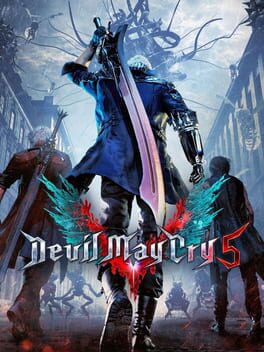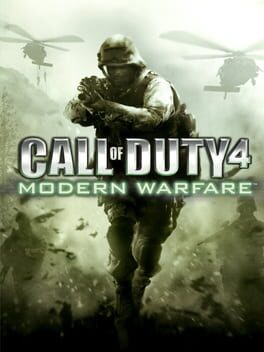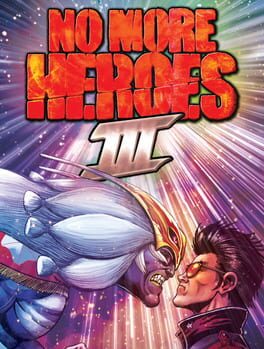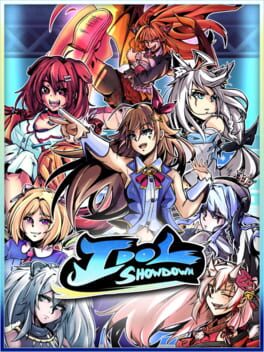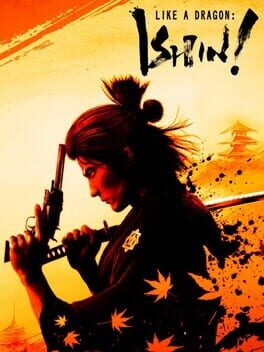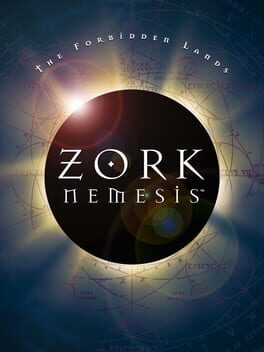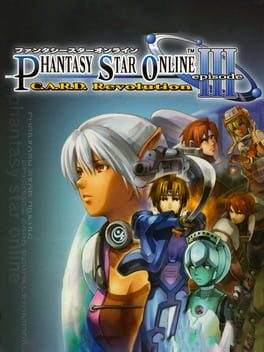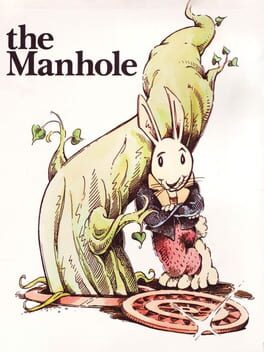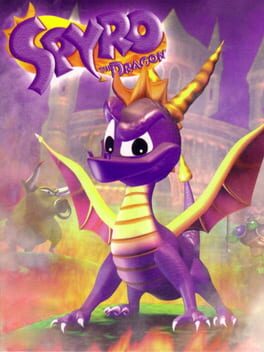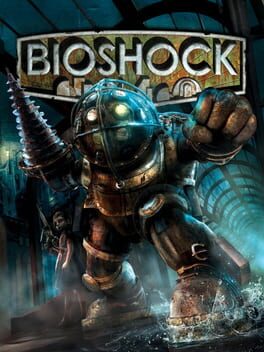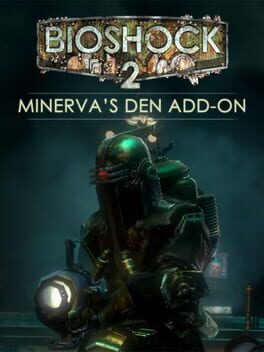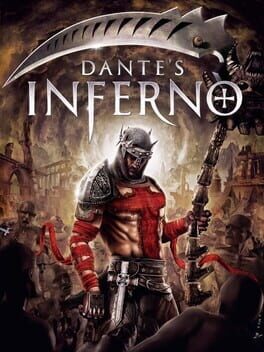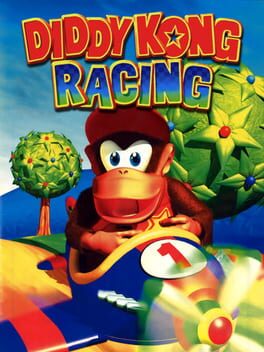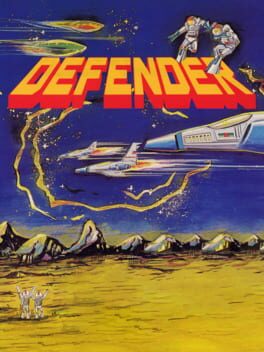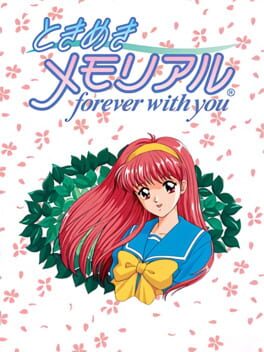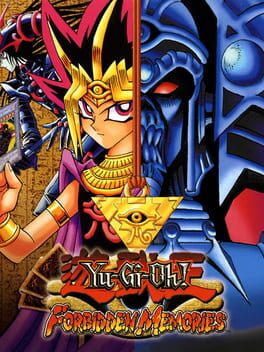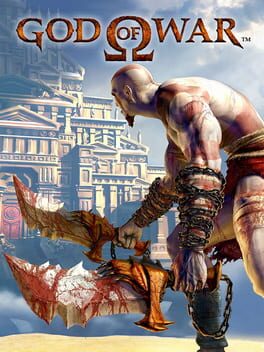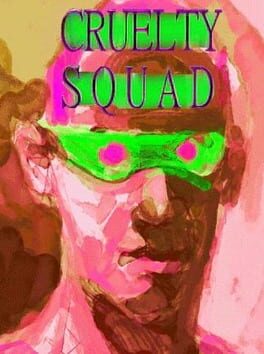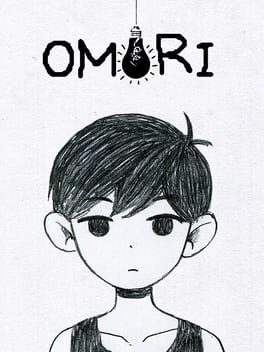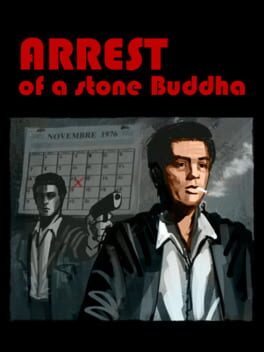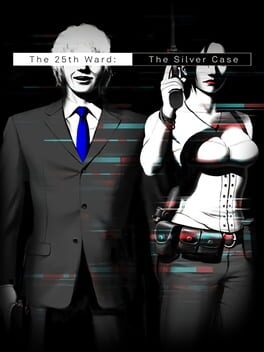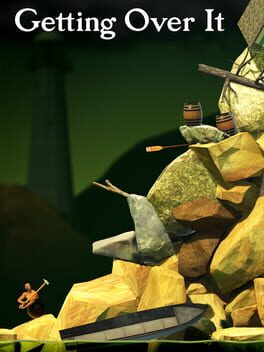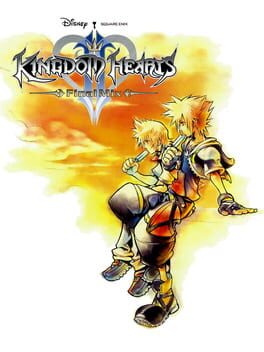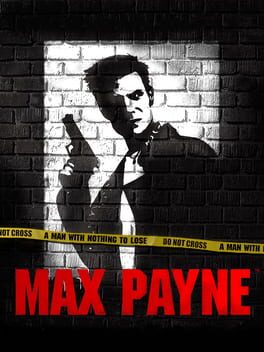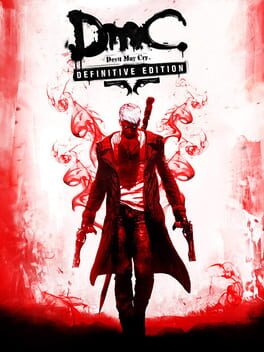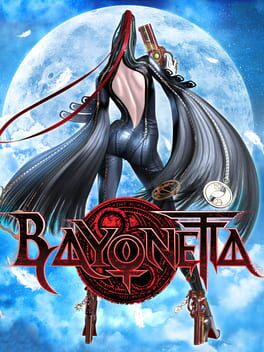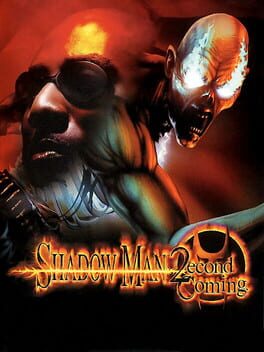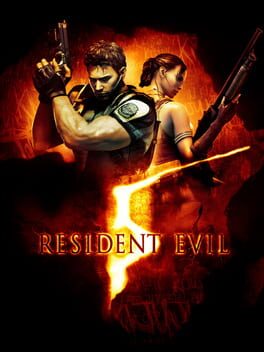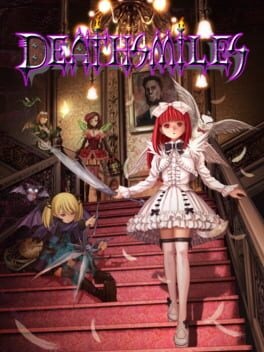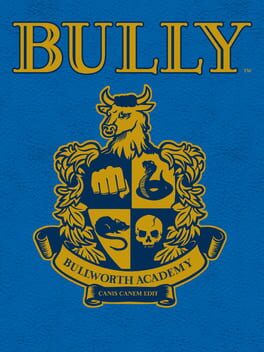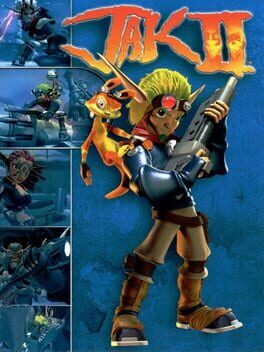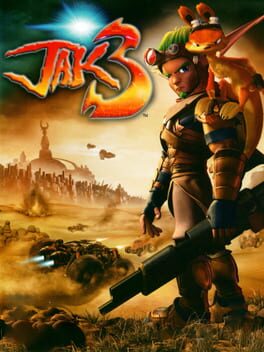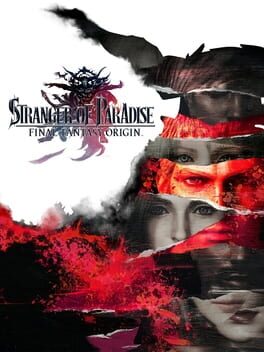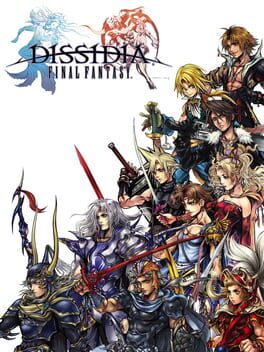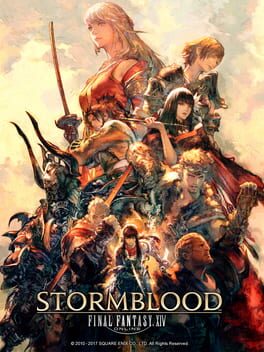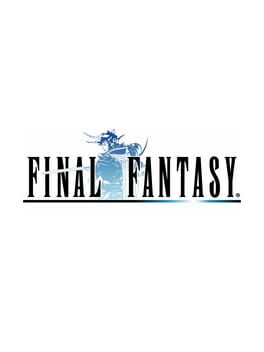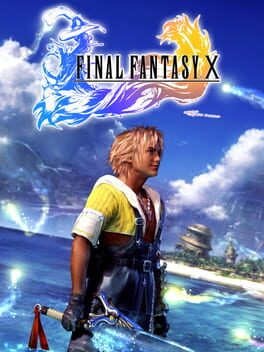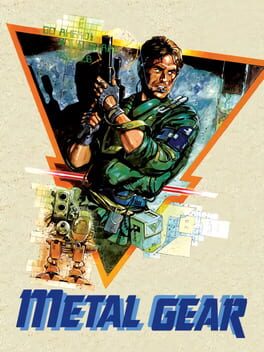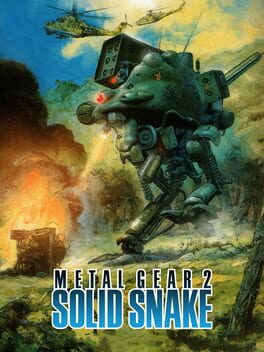thatonepersona
132 reviews liked by thatonepersona
Devil May Cry 5
2019
Far and away the most egregiously misguided attempt at myth-making in games history. This isn't the worst game ever. It's not the weirdest game ever. It is not the 'first American produced visual novel.' Limited Run Games seems content to simply upend truth and provenance to push a valueless narrative. The 'so bad it's good' shtick serves only to lessen the importance of early multimedia CD-ROM software, and drenching it in WordArt and clip art imparts the notion that this digital heritage was low class, low brow, low effort, and altogether primitive.
This repackaging of an overlong workplace sexual harassment/rape joke is altogether uncomfortable at best. Further problematising this, accompanying merch is resplendent with Edward J. Fasulo's bare chest despite him seemingly wanting nothing to do with the project. We've got industry veterans and games historians talking up the importance of digital detritus alongside YouTubers and LRG employees, the latter making the former less credible. We've got a novelisation by Twitter 'comedian' Mike Drucker. We've got skate decks and body pillows and more heaps of plastic garbage for video game 'collectors' to shove on a dusty shelf next to their four colour variants of Jay and Silent Bob Mall Brawl on NES, cum-encrusted Shantae statue, and countless other bits of mass-produced waste that belongs in a landfill. Utterly shameful how we engage with the past.
This repackaging of an overlong workplace sexual harassment/rape joke is altogether uncomfortable at best. Further problematising this, accompanying merch is resplendent with Edward J. Fasulo's bare chest despite him seemingly wanting nothing to do with the project. We've got industry veterans and games historians talking up the importance of digital detritus alongside YouTubers and LRG employees, the latter making the former less credible. We've got a novelisation by Twitter 'comedian' Mike Drucker. We've got skate decks and body pillows and more heaps of plastic garbage for video game 'collectors' to shove on a dusty shelf next to their four colour variants of Jay and Silent Bob Mall Brawl on NES, cum-encrusted Shantae statue, and countless other bits of mass-produced waste that belongs in a landfill. Utterly shameful how we engage with the past.
Final Fantasy XVI
2023
I considered strongly putting together a long-form critique of this game, but the most damning statement I could possibly make about Final Fantasy XVI is that I truly don't think it's worth it. The ways in which I think this game is bad are not unique or interesting: it is bad in the same way the vast majority of these prestige Sony single-player exclusives are. Its failures are common, predictable, and depressingly endemic. It is bad because it hates women, it is bad because it treats it's subject matter with an aggressive lack of care or interest, it is bad because it's imagination is as narrow and constrained as it's level design. But more than anything else, it is bad because it only wants to be Good.
Oxymoronic a statement as it might appear, this is core to the game's failings to me. People who make games generally want to make good games, of course, but paired with that there is an intent, an interest, an idea that seeks to be communicated, that the eloquence with which it professes its aesthetic, thematic, or mechanical goals will produce the quality it seeks. Final Fantasy XVI may have such goals, but they are supplicant to its desire to be liked, and so, rather than plant a flag of its own, it stitches together one from fabric pillaged from the most immediate eikons of popularity and quality - A Song of Ice and Fire, God of War, Demon Slayer, Devil May Cry - desperately begging to be liked by cloaking itself in what many people already do, needing to be loved in the way those things are, without any of the work or vision of its influences, and without any charisma of its own. Much like the patch and DLC content for Final Fantasy XV, it's a reactionary and cloying work that contorts itself into a shape it thinks people will love, rather than finding a unique self to be.
From the aggressively self-serious tone that embraces wholeheartedly the aesthetics of Prestige Fantasy Television with all its fucks and shits and incest and Grim Darkness to let you know that This Isn't Your Daddy's Final Fantasy, without actually being anywhere near as genuinely Dark, sad, or depressing as something like XV, from combat that borrows the surface-level signifiers of Devil May Cry combat - stingers, devil bringers, enemy step - but without any actual opposition or reaction of that series' diverse and reactive enemy set and thoughtful level design, or the way there's a episode of television-worth of lectures from a character explaining troop movements and map markers that genuinely do not matter in any way in order to make you feel like you're experiencing a well thought-out and materially concerned political Serious Fantasy, Final Fantasy XVI is pure wafer-thin illusion; all the surface from it's myriad influences but none of the depth or nuance, a greatest hits album from a band with no voice to call their own, an algorithmically generated playlist of hits that tunelessly resound with nothing. It looks like Devil May Cry, but it isn't - Devil May Cry would ask more of you than dodging one attack at a time while you perform a particularly flashy MMO rotation. It looks like A Song of Ice and Fire, but it isn't - without Martin's careful historical eye and materialist concerns, the illusion that this comes even within striking distance of that flawed work shatters when you think about the setting for more than a moment.
In fairness, Final Fantasy XVI does bring more than just the surface level into its world: it also brings with it the nastiest and ugliest parts of those works into this one, replicated wholeheartedly as Aesthetic, bereft of whatever semblance of texture and critique may have once been there. Benedikta Harman might be the most disgustingly treated woman in a recent work of fiction, the seemingly uniform AAA Game misogyny of evil mothers and heroic, redeemable fathers is alive and well, 16's version of this now agonizingly tired cliche going farther even than games I've railed against for it in the past, which all culminates in a moment where three men tell the female lead to stay home while they go and fight (despite one of those men being a proven liability to himself and others when doing the same thing he is about to go and do again, while she is not), she immediately acquiesces, and dutifully remains in the proverbial kitchen. Something that thinks so little of women is self-evidently incapable of meaningfully tackling any real-world issue, something Final Fantasy XVI goes on to decisively prove, with its story of systemic evils defeated not with systemic criticism, but with Great, Powerful Men, a particularly tiresome kind of rugged bootstrap individualism that seeks to reduce real-world evils to shonen enemies for the Special Man with Special Powers to defeat on his lonesome. It's an attempt to discuss oppression and racism that would embarrass even the other shonen media it is clearly closer in spirit to than the dark fantasy political epic it wears the skin of. In a world where the power fantasy of the shonen superhero is sacrosanct over all other concerns, it leads to a conclusion as absurd and fundamentally unimaginative as shonen jump's weakest scripts: the only thing that can stop a Bad Guy with an Eikon is a Good Guy with an Eikon.
In borrowing the aesthetics of the dark fantasy - and Matsuno games - it seeks to emulate, but without the nuance, FF16 becomes a game where the perspective of the enslaved is almost completely absent (Clive's period as a slave might as well not have occurred for all it impacts his character), and the power of nobility is Good when it is wielded by Good Hands like Lord Rosfield, a slave owner who, despite owning the clearly abused character who serves as our introduction to the bearers, is eulogized completely uncritically by the script, until a final side quest has a character claim that he was planning to free the slaves all along...alongside a letter where Lord Rosfield discusses his desire to "put down the savages". I've never seen attempted slave owner apologia that didn't reveal its virulent underlying racism, and this is no exception. In fact, any time the game attempts to put on a facade of being about something other than The Shonen Hero battling other Kamen Riders for dominance, it crumbles nigh-immediately; when Final Fantasy 16 makes its overtures towards the Power of Friendship, it rings utterly false and hollow: Clive's friends are not his power. His power is his power.
The only part of the game that truly spoke to me was the widely-derided side-quests, which offer a peek into a more compelling story: the story of a man doing the work to build and maintain a community, contributing to both the material and emotional needs of a commune that attempts to exist outside the violence of society. As tedious as these sidequests are - and as agonizing as their pacing so often is - it's the only part of this game where it felt like I was engaging with an idea. But ultimately, even this is annihilated by the game's bootstrap nonsense - that being that the hideaway is funded and maintained by the wealthy and influential across the world, the direct beneficiaries and embodiments of the status quo funding what their involvement reveals to be an utterly illusionary attempt to escape it, rendering what could be an effective exploration of what building a new idea of a community practically looks like into something that could be good neighbors with Galt's Gulch.
In a series that is routinely deeply rewarding for me to consider, FF16 stands as perhaps its most shallow, underwritten, and vacuous entry in decades. All games are ultimately illusions, of course: we're all just moving data around spreadsheets, at the end of the day. But - as is the modern AAA mode de jour - 16 is the result of the careful subtraction of texture from the experience of a game, the removal of any potential frictions and frustrations, but further even than that, it is the removal of personality, of difference, it is the attempt to make make the smoothest, most likable affect possible to the widest number of people possible. And, just like with its AAA brethren, it has almost nothing to offer me. It is the affect of Devil May Cry without its texture, the affect of Game of Thrones without even its nuance, and the affect of Final Fantasy without its soul.
Final Fantasy XVI is ultimately a success. It sought out to be Good, in the way a PS5 game like this is Good, and succeeded. And in so doing, it closed off any possibility that it would ever reach me.
It doesn’t really surprise me that each positive sentiment I have seen on Final Fantasy XVI is followed by an exclamation of derision over the series’ recent past. Whether the point of betrayal and failure was in XV, or with XIII, or even as far back as VIII, the rhetorical move is well and truly that Final Fantasy has been Bad, and with XVI, it is good again. Unfortunately, as someone who thought Final Fantasy has Been Good, consistently, throughout essentially the entire span of it's existence, I find myself on the other side of this one.
Final Fantasy XV convinced me that I could still love video games when I thought, for a moment, that I might not. That it was still possible to make games on this scale that were idiosyncratic, personal, and deeply human, even in the awful place the video game industry is in.
Final Fantasy XVI convinced me that it isn't.
Oxymoronic a statement as it might appear, this is core to the game's failings to me. People who make games generally want to make good games, of course, but paired with that there is an intent, an interest, an idea that seeks to be communicated, that the eloquence with which it professes its aesthetic, thematic, or mechanical goals will produce the quality it seeks. Final Fantasy XVI may have such goals, but they are supplicant to its desire to be liked, and so, rather than plant a flag of its own, it stitches together one from fabric pillaged from the most immediate eikons of popularity and quality - A Song of Ice and Fire, God of War, Demon Slayer, Devil May Cry - desperately begging to be liked by cloaking itself in what many people already do, needing to be loved in the way those things are, without any of the work or vision of its influences, and without any charisma of its own. Much like the patch and DLC content for Final Fantasy XV, it's a reactionary and cloying work that contorts itself into a shape it thinks people will love, rather than finding a unique self to be.
From the aggressively self-serious tone that embraces wholeheartedly the aesthetics of Prestige Fantasy Television with all its fucks and shits and incest and Grim Darkness to let you know that This Isn't Your Daddy's Final Fantasy, without actually being anywhere near as genuinely Dark, sad, or depressing as something like XV, from combat that borrows the surface-level signifiers of Devil May Cry combat - stingers, devil bringers, enemy step - but without any actual opposition or reaction of that series' diverse and reactive enemy set and thoughtful level design, or the way there's a episode of television-worth of lectures from a character explaining troop movements and map markers that genuinely do not matter in any way in order to make you feel like you're experiencing a well thought-out and materially concerned political Serious Fantasy, Final Fantasy XVI is pure wafer-thin illusion; all the surface from it's myriad influences but none of the depth or nuance, a greatest hits album from a band with no voice to call their own, an algorithmically generated playlist of hits that tunelessly resound with nothing. It looks like Devil May Cry, but it isn't - Devil May Cry would ask more of you than dodging one attack at a time while you perform a particularly flashy MMO rotation. It looks like A Song of Ice and Fire, but it isn't - without Martin's careful historical eye and materialist concerns, the illusion that this comes even within striking distance of that flawed work shatters when you think about the setting for more than a moment.
In fairness, Final Fantasy XVI does bring more than just the surface level into its world: it also brings with it the nastiest and ugliest parts of those works into this one, replicated wholeheartedly as Aesthetic, bereft of whatever semblance of texture and critique may have once been there. Benedikta Harman might be the most disgustingly treated woman in a recent work of fiction, the seemingly uniform AAA Game misogyny of evil mothers and heroic, redeemable fathers is alive and well, 16's version of this now agonizingly tired cliche going farther even than games I've railed against for it in the past, which all culminates in a moment where three men tell the female lead to stay home while they go and fight (despite one of those men being a proven liability to himself and others when doing the same thing he is about to go and do again, while she is not), she immediately acquiesces, and dutifully remains in the proverbial kitchen. Something that thinks so little of women is self-evidently incapable of meaningfully tackling any real-world issue, something Final Fantasy XVI goes on to decisively prove, with its story of systemic evils defeated not with systemic criticism, but with Great, Powerful Men, a particularly tiresome kind of rugged bootstrap individualism that seeks to reduce real-world evils to shonen enemies for the Special Man with Special Powers to defeat on his lonesome. It's an attempt to discuss oppression and racism that would embarrass even the other shonen media it is clearly closer in spirit to than the dark fantasy political epic it wears the skin of. In a world where the power fantasy of the shonen superhero is sacrosanct over all other concerns, it leads to a conclusion as absurd and fundamentally unimaginative as shonen jump's weakest scripts: the only thing that can stop a Bad Guy with an Eikon is a Good Guy with an Eikon.
In borrowing the aesthetics of the dark fantasy - and Matsuno games - it seeks to emulate, but without the nuance, FF16 becomes a game where the perspective of the enslaved is almost completely absent (Clive's period as a slave might as well not have occurred for all it impacts his character), and the power of nobility is Good when it is wielded by Good Hands like Lord Rosfield, a slave owner who, despite owning the clearly abused character who serves as our introduction to the bearers, is eulogized completely uncritically by the script, until a final side quest has a character claim that he was planning to free the slaves all along...alongside a letter where Lord Rosfield discusses his desire to "put down the savages". I've never seen attempted slave owner apologia that didn't reveal its virulent underlying racism, and this is no exception. In fact, any time the game attempts to put on a facade of being about something other than The Shonen Hero battling other Kamen Riders for dominance, it crumbles nigh-immediately; when Final Fantasy 16 makes its overtures towards the Power of Friendship, it rings utterly false and hollow: Clive's friends are not his power. His power is his power.
The only part of the game that truly spoke to me was the widely-derided side-quests, which offer a peek into a more compelling story: the story of a man doing the work to build and maintain a community, contributing to both the material and emotional needs of a commune that attempts to exist outside the violence of society. As tedious as these sidequests are - and as agonizing as their pacing so often is - it's the only part of this game where it felt like I was engaging with an idea. But ultimately, even this is annihilated by the game's bootstrap nonsense - that being that the hideaway is funded and maintained by the wealthy and influential across the world, the direct beneficiaries and embodiments of the status quo funding what their involvement reveals to be an utterly illusionary attempt to escape it, rendering what could be an effective exploration of what building a new idea of a community practically looks like into something that could be good neighbors with Galt's Gulch.
In a series that is routinely deeply rewarding for me to consider, FF16 stands as perhaps its most shallow, underwritten, and vacuous entry in decades. All games are ultimately illusions, of course: we're all just moving data around spreadsheets, at the end of the day. But - as is the modern AAA mode de jour - 16 is the result of the careful subtraction of texture from the experience of a game, the removal of any potential frictions and frustrations, but further even than that, it is the removal of personality, of difference, it is the attempt to make make the smoothest, most likable affect possible to the widest number of people possible. And, just like with its AAA brethren, it has almost nothing to offer me. It is the affect of Devil May Cry without its texture, the affect of Game of Thrones without even its nuance, and the affect of Final Fantasy without its soul.
Final Fantasy XVI is ultimately a success. It sought out to be Good, in the way a PS5 game like this is Good, and succeeded. And in so doing, it closed off any possibility that it would ever reach me.
It doesn’t really surprise me that each positive sentiment I have seen on Final Fantasy XVI is followed by an exclamation of derision over the series’ recent past. Whether the point of betrayal and failure was in XV, or with XIII, or even as far back as VIII, the rhetorical move is well and truly that Final Fantasy has been Bad, and with XVI, it is good again. Unfortunately, as someone who thought Final Fantasy has Been Good, consistently, throughout essentially the entire span of it's existence, I find myself on the other side of this one.
Final Fantasy XV convinced me that I could still love video games when I thought, for a moment, that I might not. That it was still possible to make games on this scale that were idiosyncratic, personal, and deeply human, even in the awful place the video game industry is in.
Final Fantasy XVI convinced me that it isn't.
Final Fantasy XVI
2023
'Those great, beautiful ships, rocking silently on the calm waters, with their idle and wistful sails, are they not telling us in a silent language — when will we depart for happiness?'
– Charles Baudelaire, Fusées, VIII, 1887 (personal translation).
One of the most difficult issues in fantasy studies is to define its contours and, by extension, its relationship to reality. In her seminal study, Fantasy: The literature of subversion (1981), Rosemary Jackson points out that fantasy violates the conventions and rules of our reality and: 'threatens to subvert rules and conventions taken to be normative [and] disturb "rules" of artistic representation and literature’s reproduction of the "real"' [1]. The capacity for deviation that speculative fiction offers is both an opportunity and a danger. Jackson points out that this subversive potential does not mean that fantasy or the fantastic are genres that always aim for social progressivism. In fact, the overwhelming majority of the pulp tradition was steeped in racist, homophobic and misogynist tropes that exerted a lasting influence on fiction throughout the late twentieth century and to this day.
The misogynist issue in Western-style fantasy
Many authors hide behind these historical precedents to conceal a conservative discourse. The existence of multiple races allows for the perpetuation of social oppression, and while female characters have generally become more active in recent decades, they continue to fit into old-fashioned stereotypes [2]. The Final Fantasy series is part of this dynamic and has always oscillated between these major themes of fantasy fiction, notably by offering a regular comparison between magic and technological modernity, nature and industry, good and evil, humanity and divinity. These dichotomies are relatively common and allow the story to touch on issues such as capitalist exploitation and the use of natural resources. However, the representation of other topics remains disastrous: Final Fantasy XIV (2010) is especially characterised by deep-seated racism and sexism, the latter partially masked by the presence of strong female characters in positions of power.
It is hard to say whether these precautions were taken to appeal to a particular audience, but it is clear that Final Fantasy XVI ignores all these concerns and plunges into the most outrageous archaism, piling on misogynistic scenes wherever possible, supposedly justified by the harshness of European medieval society. Excuses of this kind obscure the real issues. The player follows the story of Clive Rosfield, drawn into a quest for revenge after the Phoenix Gate incident, which spells the end of the Duchy of Rosaria. Miraculously reunited with his childhood friend Jill Warrick, he joins Cid's group, determined to change the situation of the Bearers – magic-capable individuals enslaved across the continent. Final Fantasy XVI is therefore a tale of free will and independence, pitting the dark nature of the world against the purity of Cid and Clive's ideals.
To create this atmosphere, as well as the division between good and evil, the title makes extensive use of violence, sex and sexual violence as narrative drivers. Lenise Prater explains that Fiona McIntosh's Percheron trilogy (2005) constructs: 'a series of juxtapositions between good and evil [...] through the representation of sexual violence' [3]. The same processes are at work in Final Fantasy XVI, from the very first narrative arc of the adventure, where Benedikta is cast as the archetypal femme fatale, ready to use her body to manipulate her rivals: the character is constantly brought back to her status as a woman, and it is the threat of sexual violence that cements her development – Annabella is constructed in a similar way. Final Fantasy XVI revels in the dichotomy between whores and innocent virgins. Despite the Western aesthetic of the title, Jill is no more than a yamato nadeshiko who is constantly sidelined by the game. She mostly serves as a narrative device to advance the plot, through her multiple visits to the infirmary or because she is kidnapped by Clive's enemies. The title denies her any agency, and her nuanced fragility is only hinted at in a few sentences before being brushed aside: it takes almost thirty hours of gameplay before Clive explicitly asks her how she is, despite her constant concern for the protagonist's anxieties.
A case for centrism and laissez-faire
This conservative portrayal is echoed in the discourse on the Bearers. The game is moderately critical of slavery on the continent and fails to make it a structural issue for Clive, who always remains somewhat detached from the problem. This issue is structurally embedded in the way the player interacts with the world, as they are extremely passive in relation to the events portrayed in the story. While the player is aware of the political manipulations taking place in Storm, they cannot act on them directly; Clive is blindly thrown into the fray and the situation is simply resolved in a battle that depoliticises the social stakes. Similarly, the Seals donated by certain NPCs guarantee Clive's reputation in the community in a highly artificial way, removing any roughness from the interactions. Clive fights to free the Bearers because he inherits this mission from his father and Cid, but this task seems disembodied throughout the game.
Beyond the main quest, the side quests are particularly lacklustre and do little to deepen the world-building. Because they can be accessed at any point in the game, Final Fantasy XVI chooses to exclude companions from them. They simply disappear from the cutscenes and thus have no chance to react to the world around them. Since the intention is to establish Clive as an ideologically good, open and self-governing character, all side quests are resolved by Clive's ideological concessions or miraculous unifications in the face of artificially created danger, without the slightest contradiction from any of the other main characters. Only in the final stretch does someone point out Clive's hypocrisy and domineering power over Jill, but the scene is quickly swept away by the return of Gav, the comic relief of the group.
Final Fantasy XVI is more concerned with shocking, melodramatic or cathartic platitudes than with radical denunciations of inequality and oppression. Worse, these shocking scenes do not even make the world dynamic, so poor is the structure of the narrative. Two problems stand out. Firstly, the interweaving of high-intensity sequences with slower passages: instead of building up the world through genuine slice-of-life sequences, the game multiplies banalities that the player has already understood for several dozen hours. The temporality of the story is also incoherent. Clive seems to cross the continent in a matter of hours, while his rivals remain completely passive. The confrontation between the Sanbreque Empire and the Dhalmekian Republic is characterised by irrational stagnation and passivity, allowing Clive to strike unhindered. The Twins always remain static, despite long ellipses in time.
A hollow and meaningless experience
Perhaps Final Fantasy XVI should not be taken so literally, but rather accepted as the nekketsu it becomes in the second half of the game. Such an interpretation would be acceptable if the game did not take itself so seriously. However, as in Final Fantasy XIV, the writing wallows in a very uncomfortable theatrical heaviness – which the actors generally manage to save from disaster – as if clumsily mimicking the drama of Shakespeare's historical plays. However, Clive's disillusioned, self-deprecating, borderline comic character breaks up this fiction. Some characters work well, playing up their theatrical nature, such as Cid or Lord Byron, but they are quickly relegated to the background or an essentially comic role.
The shifts in tone and pacing detract from the development of the narrative, which cannot be saved by a few flashes of brilliance. The aetheric floods seem to have been imagined as a reflection of nuclear risks, highlighting the danger of Japan's post-Fukushima energy crutch, but in the end they are only used as a narrative expedient to create danger where the plot needs it. The pinnacle of dishonesty and disrespect for a title that centres its discourse on human free will lies in the choice of names for the NPC fillers. In the pure tradition of Final Fantasy XIV, they include puns and comical alliterations ('Broom-Bearer') that strip them of all substance and reduce them to ridicule. In the second half of the game, a little girl is introduced as a character of some narrative importance, but the title does not even bother to give her a name or address her living conditions.
Meanwhile, the action sequences prove to be particularly hollow. The choreography in the first few hours is quite ingenious, highlighting Clive's agility with complex movements and rather creative camera angles. As the title progresses, this aspect is abandoned in favour of fights that drag on and resort to nekketsu clichés. The duel against Titan lasts forty minutes and is a miserable succession of attacks around the stone tentacles. Final Fantasy XVI even has the audacity to end the battle not with the obvious cinematic climax, but with a dull and particularly unpleasant aerial sequence. Subsequent encounters also drag on for no apparent reason other than to demonstrate a genuine – if futile – mastery of the lightning engine.
Ergonomics, gameplay and fluidity
While Final Fantasy XVI boasts detailed environments at first glance, the facade quickly cracks. The early areas are indeed highly detailed, to the point of drowning the player in detail – navigating through the thick vegetation is quite difficult, forcing the player to use Torgal to progress – but the quality deteriorates as the game progresses. The dense environments disappear in favour of vast open areas that struggle to convey the majesty of the world. Although the cities visible on the horizon are beautiful backdrops, they fail to radiate materially onto their surroundings, which then become mere abstractions. Moreover, Clive's movement is extremely sluggish: even getting on his chocobo is an unpleasant task that constantly interrupts the fluidity of the action, while the player is condemned to an extraordinary passivity in order to get from one place to another.
In the Hideaway, this impression is reinforced by Clive's inability to sprint: in the second half of the game, getting to the backyard is a gruelling chore. The magic of this cocoon quickly vanishes, as the various characters keep repeating themselves and are only mediocrely animated. Despite the detailed scenery, the game borrows all its animations from Final Fantasy XIV, giving a very artificial tone to the discussions. The Hideaway is less a place where the player can comfortably catch up with their favourite NPCs, and more a burdensome obligation to access NPCs, side quests and the hunt board – requiring the player to physically go there to see the location of elite monsters, a design mistake that even Final Fantasy XIV avoided.
The enjoyment of the combat system is left to the player and their experience of other character-action games, but it is absurd that the player has to wait at least twenty hours to finally be given a modicum of flexibility in their attack options: Final Fantasy XVI justifies its unique protagonist with a deep combat system that encourages the creation of diverse builds, but this philosophy is only appropriate in a New Game+ where all powers are unlocked from the start. In a first playthrough, the player must suffer from an impressive slowness, to the point where the Story Mode becomes an obvious option. The title here echoes the recent problem of Shadowbringers (2019) and especially Endwalker (2021), which first designs its battles with the Extreme and Savage versions, before cutting out the most difficult sections for the Normal versions – the result is a sense of incompleteness that is particularly damaging when combined with the very slowly evolving combat system.
It is difficult to place Final Fantasy XVI in the landscape of modern Japanese video games, so awkward is it in every way. With the title still in its cycle of artificial marketing in preparation for the DLCs, one can only speculate as to the reasons for these failings. Perhaps the lack of coherence can be explained by the fractured development team working on two major games, and the highly eclectic nature of the directors brought together by Naoki Yoshida. His design philosophy is particularly well suited to an MMO, but Final Fantasy XVI suffers greatly from it: the endless succession of side quests involving the Hideaway characters just before the final battle is incomprehensible, as if the game had remembered that it needed to conclude. Hiroshi Takai and Kazutoyo Maehiro's narrative vision is a series of shocking, empty, meaningless scenes: players of Heavensward (2015) had the opportunity to suffer from Ysayle's portrayal, and it is surprising that Final Fantasy XVI does even worse, a standard-bearer for passive misogyny in modern fantasy. That Jill's theme becomes 'My Star' and denies her any agency in the game's final moments is particularly painful and aptly sums up the title.
__________
[1] Rosemary Jackson, Fantasy: The literature of subversion, Routledge, London, 2005 [1981], p. 14.
[2] On the topic, see for example Peter Bebergal (ed.), Appendix N: The Eldritch Roots Of Dungeons & Dragons, Strange Attractor Press, London, 2021. In the afterword, Ann VanderMeer discusses the conservative roots of pulp fantasy and of the historical TTRPG.
[3] Lenise Prater, 'Monstrous Fantasies: Reinforcing Rape Culture in Fiona McIntosh's Fantasy Novels', in Hecate, vol. 39, no. 1-2, 2014.
– Charles Baudelaire, Fusées, VIII, 1887 (personal translation).
One of the most difficult issues in fantasy studies is to define its contours and, by extension, its relationship to reality. In her seminal study, Fantasy: The literature of subversion (1981), Rosemary Jackson points out that fantasy violates the conventions and rules of our reality and: 'threatens to subvert rules and conventions taken to be normative [and] disturb "rules" of artistic representation and literature’s reproduction of the "real"' [1]. The capacity for deviation that speculative fiction offers is both an opportunity and a danger. Jackson points out that this subversive potential does not mean that fantasy or the fantastic are genres that always aim for social progressivism. In fact, the overwhelming majority of the pulp tradition was steeped in racist, homophobic and misogynist tropes that exerted a lasting influence on fiction throughout the late twentieth century and to this day.
The misogynist issue in Western-style fantasy
Many authors hide behind these historical precedents to conceal a conservative discourse. The existence of multiple races allows for the perpetuation of social oppression, and while female characters have generally become more active in recent decades, they continue to fit into old-fashioned stereotypes [2]. The Final Fantasy series is part of this dynamic and has always oscillated between these major themes of fantasy fiction, notably by offering a regular comparison between magic and technological modernity, nature and industry, good and evil, humanity and divinity. These dichotomies are relatively common and allow the story to touch on issues such as capitalist exploitation and the use of natural resources. However, the representation of other topics remains disastrous: Final Fantasy XIV (2010) is especially characterised by deep-seated racism and sexism, the latter partially masked by the presence of strong female characters in positions of power.
It is hard to say whether these precautions were taken to appeal to a particular audience, but it is clear that Final Fantasy XVI ignores all these concerns and plunges into the most outrageous archaism, piling on misogynistic scenes wherever possible, supposedly justified by the harshness of European medieval society. Excuses of this kind obscure the real issues. The player follows the story of Clive Rosfield, drawn into a quest for revenge after the Phoenix Gate incident, which spells the end of the Duchy of Rosaria. Miraculously reunited with his childhood friend Jill Warrick, he joins Cid's group, determined to change the situation of the Bearers – magic-capable individuals enslaved across the continent. Final Fantasy XVI is therefore a tale of free will and independence, pitting the dark nature of the world against the purity of Cid and Clive's ideals.
To create this atmosphere, as well as the division between good and evil, the title makes extensive use of violence, sex and sexual violence as narrative drivers. Lenise Prater explains that Fiona McIntosh's Percheron trilogy (2005) constructs: 'a series of juxtapositions between good and evil [...] through the representation of sexual violence' [3]. The same processes are at work in Final Fantasy XVI, from the very first narrative arc of the adventure, where Benedikta is cast as the archetypal femme fatale, ready to use her body to manipulate her rivals: the character is constantly brought back to her status as a woman, and it is the threat of sexual violence that cements her development – Annabella is constructed in a similar way. Final Fantasy XVI revels in the dichotomy between whores and innocent virgins. Despite the Western aesthetic of the title, Jill is no more than a yamato nadeshiko who is constantly sidelined by the game. She mostly serves as a narrative device to advance the plot, through her multiple visits to the infirmary or because she is kidnapped by Clive's enemies. The title denies her any agency, and her nuanced fragility is only hinted at in a few sentences before being brushed aside: it takes almost thirty hours of gameplay before Clive explicitly asks her how she is, despite her constant concern for the protagonist's anxieties.
A case for centrism and laissez-faire
This conservative portrayal is echoed in the discourse on the Bearers. The game is moderately critical of slavery on the continent and fails to make it a structural issue for Clive, who always remains somewhat detached from the problem. This issue is structurally embedded in the way the player interacts with the world, as they are extremely passive in relation to the events portrayed in the story. While the player is aware of the political manipulations taking place in Storm, they cannot act on them directly; Clive is blindly thrown into the fray and the situation is simply resolved in a battle that depoliticises the social stakes. Similarly, the Seals donated by certain NPCs guarantee Clive's reputation in the community in a highly artificial way, removing any roughness from the interactions. Clive fights to free the Bearers because he inherits this mission from his father and Cid, but this task seems disembodied throughout the game.
Beyond the main quest, the side quests are particularly lacklustre and do little to deepen the world-building. Because they can be accessed at any point in the game, Final Fantasy XVI chooses to exclude companions from them. They simply disappear from the cutscenes and thus have no chance to react to the world around them. Since the intention is to establish Clive as an ideologically good, open and self-governing character, all side quests are resolved by Clive's ideological concessions or miraculous unifications in the face of artificially created danger, without the slightest contradiction from any of the other main characters. Only in the final stretch does someone point out Clive's hypocrisy and domineering power over Jill, but the scene is quickly swept away by the return of Gav, the comic relief of the group.
Final Fantasy XVI is more concerned with shocking, melodramatic or cathartic platitudes than with radical denunciations of inequality and oppression. Worse, these shocking scenes do not even make the world dynamic, so poor is the structure of the narrative. Two problems stand out. Firstly, the interweaving of high-intensity sequences with slower passages: instead of building up the world through genuine slice-of-life sequences, the game multiplies banalities that the player has already understood for several dozen hours. The temporality of the story is also incoherent. Clive seems to cross the continent in a matter of hours, while his rivals remain completely passive. The confrontation between the Sanbreque Empire and the Dhalmekian Republic is characterised by irrational stagnation and passivity, allowing Clive to strike unhindered. The Twins always remain static, despite long ellipses in time.
A hollow and meaningless experience
Perhaps Final Fantasy XVI should not be taken so literally, but rather accepted as the nekketsu it becomes in the second half of the game. Such an interpretation would be acceptable if the game did not take itself so seriously. However, as in Final Fantasy XIV, the writing wallows in a very uncomfortable theatrical heaviness – which the actors generally manage to save from disaster – as if clumsily mimicking the drama of Shakespeare's historical plays. However, Clive's disillusioned, self-deprecating, borderline comic character breaks up this fiction. Some characters work well, playing up their theatrical nature, such as Cid or Lord Byron, but they are quickly relegated to the background or an essentially comic role.
The shifts in tone and pacing detract from the development of the narrative, which cannot be saved by a few flashes of brilliance. The aetheric floods seem to have been imagined as a reflection of nuclear risks, highlighting the danger of Japan's post-Fukushima energy crutch, but in the end they are only used as a narrative expedient to create danger where the plot needs it. The pinnacle of dishonesty and disrespect for a title that centres its discourse on human free will lies in the choice of names for the NPC fillers. In the pure tradition of Final Fantasy XIV, they include puns and comical alliterations ('Broom-Bearer') that strip them of all substance and reduce them to ridicule. In the second half of the game, a little girl is introduced as a character of some narrative importance, but the title does not even bother to give her a name or address her living conditions.
Meanwhile, the action sequences prove to be particularly hollow. The choreography in the first few hours is quite ingenious, highlighting Clive's agility with complex movements and rather creative camera angles. As the title progresses, this aspect is abandoned in favour of fights that drag on and resort to nekketsu clichés. The duel against Titan lasts forty minutes and is a miserable succession of attacks around the stone tentacles. Final Fantasy XVI even has the audacity to end the battle not with the obvious cinematic climax, but with a dull and particularly unpleasant aerial sequence. Subsequent encounters also drag on for no apparent reason other than to demonstrate a genuine – if futile – mastery of the lightning engine.
Ergonomics, gameplay and fluidity
While Final Fantasy XVI boasts detailed environments at first glance, the facade quickly cracks. The early areas are indeed highly detailed, to the point of drowning the player in detail – navigating through the thick vegetation is quite difficult, forcing the player to use Torgal to progress – but the quality deteriorates as the game progresses. The dense environments disappear in favour of vast open areas that struggle to convey the majesty of the world. Although the cities visible on the horizon are beautiful backdrops, they fail to radiate materially onto their surroundings, which then become mere abstractions. Moreover, Clive's movement is extremely sluggish: even getting on his chocobo is an unpleasant task that constantly interrupts the fluidity of the action, while the player is condemned to an extraordinary passivity in order to get from one place to another.
In the Hideaway, this impression is reinforced by Clive's inability to sprint: in the second half of the game, getting to the backyard is a gruelling chore. The magic of this cocoon quickly vanishes, as the various characters keep repeating themselves and are only mediocrely animated. Despite the detailed scenery, the game borrows all its animations from Final Fantasy XIV, giving a very artificial tone to the discussions. The Hideaway is less a place where the player can comfortably catch up with their favourite NPCs, and more a burdensome obligation to access NPCs, side quests and the hunt board – requiring the player to physically go there to see the location of elite monsters, a design mistake that even Final Fantasy XIV avoided.
The enjoyment of the combat system is left to the player and their experience of other character-action games, but it is absurd that the player has to wait at least twenty hours to finally be given a modicum of flexibility in their attack options: Final Fantasy XVI justifies its unique protagonist with a deep combat system that encourages the creation of diverse builds, but this philosophy is only appropriate in a New Game+ where all powers are unlocked from the start. In a first playthrough, the player must suffer from an impressive slowness, to the point where the Story Mode becomes an obvious option. The title here echoes the recent problem of Shadowbringers (2019) and especially Endwalker (2021), which first designs its battles with the Extreme and Savage versions, before cutting out the most difficult sections for the Normal versions – the result is a sense of incompleteness that is particularly damaging when combined with the very slowly evolving combat system.
It is difficult to place Final Fantasy XVI in the landscape of modern Japanese video games, so awkward is it in every way. With the title still in its cycle of artificial marketing in preparation for the DLCs, one can only speculate as to the reasons for these failings. Perhaps the lack of coherence can be explained by the fractured development team working on two major games, and the highly eclectic nature of the directors brought together by Naoki Yoshida. His design philosophy is particularly well suited to an MMO, but Final Fantasy XVI suffers greatly from it: the endless succession of side quests involving the Hideaway characters just before the final battle is incomprehensible, as if the game had remembered that it needed to conclude. Hiroshi Takai and Kazutoyo Maehiro's narrative vision is a series of shocking, empty, meaningless scenes: players of Heavensward (2015) had the opportunity to suffer from Ysayle's portrayal, and it is surprising that Final Fantasy XVI does even worse, a standard-bearer for passive misogyny in modern fantasy. That Jill's theme becomes 'My Star' and denies her any agency in the game's final moments is particularly painful and aptly sums up the title.
__________
[1] Rosemary Jackson, Fantasy: The literature of subversion, Routledge, London, 2005 [1981], p. 14.
[2] On the topic, see for example Peter Bebergal (ed.), Appendix N: The Eldritch Roots Of Dungeons & Dragons, Strange Attractor Press, London, 2021. In the afterword, Ann VanderMeer discusses the conservative roots of pulp fantasy and of the historical TTRPG.
[3] Lenise Prater, 'Monstrous Fantasies: Reinforcing Rape Culture in Fiona McIntosh's Fantasy Novels', in Hecate, vol. 39, no. 1-2, 2014.
Final Fantasy XVI
2023
No More Heroes III
2021
”The most detestable habit in modern cinema is the homage. I don’t want to see another goddamn homage in anybody’s movie.” - Orson Welles, speaking at the Cinémathèque Française in 1982
Meaningless referencing is a hallmark of Grasshopper Manufacture video games. In The Silver Case, Tetsugoro Kusabi says a moment in time reminds him of the Rocky movies; Stephan Charbonie name-drops the 1994 FIFA World Cup in Flower, Sun, and Rain; one of my favourite vignettes in The 25th Ward essentially boils down to two detectives being jacked to the tits about going to Starbucks for a caramel macchiato.
I didn’t bother fact-checking the references above for correctness - is that what those references were again? Is that what they actually referred to? I don’t remember. It was something like that, but I’m not sure - I doubt you knew if my references to these references were right, either. You just know that Suda 51 and his staff love to acknowledge things that they like inside things that they’ve created, right? That jarring feeling of hearing a sci-fi psycho killer monologue about the dollar menu at McDonalds, or watching the lyrics from your favourite moody new-wave hit crawl across the LEVEL COMPLETE screen. There’s something special about seeing and hearing a virtual world acknowledge another (real or fictional) world in material terms that we can recognise and appreciate.
References are, of course, an oft-maligned artistic technique - Orson Welles infamously condemned any artist who leaned on referential crutches. Ironically and hypocritically, the Welles filmography is stuffed with creations that he used as vessels of reference to other works of art. F for Fake - one of his best - is not much more than a series of homages to performances and works of art - both real and imagined - that Welles admired. Transformers: The Movie, his final performance, is nothing more than one big reference to a line of plastic Hasbro toys. Despite his trademark bullish blustering, even one of the all-time greats couldn’t avoid contradicting himself on the matter of referencing. Reference is an inevitable part of self-expression that even some of the best directors of adverts for frozen peas simply cannot avoid.
Cantankerous contradictions aside, I imagine most of us feel similarly to Welles about references. As the always-rolling stone of pop culture gathers more and more digital detritus, films, television shows and video games gain an ever-increasing pool of other people’s popular history to lean on - we’ve all no doubt rolled our eyes at a shameless Star Wars parody or Skyrim knee joke a few hundred times in our lives. Captain America’s infamous “I got that reference” line from Avengers has itself become a reference. 2020s culture has essentially become a referential ouroboros, with creators cyclically patting each other on the back with cameos, shoutouts and in-game tshirts.
Filling your own work with someone else’s work is often just a tedious exercise that outwardly effuses appreciation for another artist, but really just serves as a way for you to self-congratulate and show people what you and they already know. Despite the fact that all these shoutouts are essentially made unto a cultural void, there are still some references being made today that can become special to you or me. After all, we still hold some level of care for the pieces that make up each other's identities.
Since playing Travis Strikes Again earlier this year, I’ve not been able to shake the memory of a moment that held an eerie serendipity for me. It happened during one of the game’s visual novel detours - in pursuit of a Death Ball, Travis is sent to a festival in Split, Croatia. Whoa! In 2019, the year TSA launched, I went to a festival in Split, Croatia! And then, not long after that, Travis talks about how his handler/girlfriend/wife is really into SUP (stand up paddleboard) yoga right now - my handler/girlfriend/wife is really into SUP (stand up paddleboard) yoga right now! What are the chances, eh?! Travis is just like me! Are we on the same journey? If we read Travis as an extension of Suda 51, is Mr. Goichi Suda himself on that journey with me, too?
Such is the power of a meaningless reference. Two throwaway lines with no broader meaning or significance can suddenly bring a viewer/consumer deeper into an artist/character’s world by giving them something in common - but only for the people who rolled the same numbers on the die of life and culture that the creator did. A true artist, Orson would likely argue, could create meaning through depiction of a universal human experience - one that doesn’t rely on creator and observer both owning the same DVDs or liking the same sports team.
I don’t think I’m alone in seeing superficial-referential similarities between myself and Travis Touchdown. In the wake of No More Heroes 3’s launch, I read a tweet about the game that was making the rounds on KamuiNet - not only did it praise the game for allowing Travis, Shinobu and Bad Girl to age in line with the real-life release dates of the No More Heroes video games, it also suggested that it was refreshing to see a creation where older characters can let their geek-freak flags fly. It’s cool that a 40 year old man can like Chr’s Cunterttack; it’s cool to drink beers on your couch and watch moe anime; it’s cool to be a fully grown adult and still swing a toy lightsaber around; uhhh… and more of that sort of thing (I wager the tweeter would love Kevin Smith’s Clerks 2). I’d reference the tweet, but I don’t know where it is now - hopefully this allusion is enough to keep you in the loop, even if I have likely muddied the specifics once again.
So - was that tweet made with tongue planted firmly in cheek? It’s hard to say. You’d assume a fan of No More Heroes would think twice before praising a game for permitting revelry in stunted consumerism, but hey - I know of people who own replicas of Travis Touchdown’s jacket. Suda himself retweeted a dude who has the beam katana tattooed all the way down his calf. Some people love these games without thinking too hard about all of it. And that’s fine! Whether the tweet was intentionally ironic or not, though, I still think it’s a worthy observation that drives its Akira motorcycle (omg it does The Slide!! sick reference!!!) quite close to what No More Heroes 3 is hopefully trying to truthfully achieve in its own scrappy texture-popping, frame-hitching, wall-clipping little way.
I won’t waste too much time recapping how we got to No More Heroes 3 (you’re on Backloggd, after all, and can read excellent Top Reviews for each game in the series) but it’s worth considering what each NMH game was really about. The original game in particular, as it’s NMH3’s closest relative - No More Heroes 3 is to No More Heroes 1 as The Force Awakens was to A New Hope, to make another meaningless reference. A reboot and retread of well-worn ground that revels in all the superficial signifiers we’ve come to expect from each series. Revived from the dead with an injection of Disney/Marvelous cash and creatively controlled for a whole new generation. With each re-awakening, the main characters are now older and not necessarily any wiser, reliving glory days by referencing all that Good Shit you loved so much countless decades ago. Hey… They even both have blue lightsabers! What a reference!
Surface-level symbology and parallels aside, probably the most important thing to keep in mind about No More Heroes 1 while playing No More Heroes 3 is its pop-punk meditation on consumer identity and how it was essentially used to trap Travis in someone else’s violent cycle of gig economics (again: read those Top Reviews!). It doesn’t even matter if he’s aware of the grind he’s trapped in and why it sucks - you and Travis still have to participate in your literal or figurative lawn-mowing in order to afford your new video game t-shirts. And this was before the inescapable collective consciousness of the 2.0 and 3.0 Internets forced us all to look at and buy the same things all the time. Ultimately, the only way Travis could escape his perpetual consumer torment was to go live in the woods and play someone else’s video game (fuck!!! a reference!!) all day instead. And even then, the past he wasn’t able to kill (in the form of a reference to a prior NMH game) still found him and brought him back to the modern metropolis.
When looked at through a lens crafted in the present day, the original No More Heroes couldn't have dropped at a better time. It released the same year as the first iPhone and the '07 Global Financial Crash, and just a few months later, Iron Man hit cinemas. Can you think of three bigger social and cultural touchstones for the 2010/20s era? NMH was the final checkpoint before the end of nerd culture's Bronze Age and the beginning of its Iron (Man) Age. Not a smartphone in sight. Just NEETs living in the moe-ment.
It may just be me attributing my own meaning to a personal period of time, of course - I played the first game as an unemployed 18 year old dweeb hiding out in his parents' back room, and I'm now a 31 year old dweeb with a mortgage and a (furry) child - but it does feel like there's been a momentous paradigm shift in The Culture since 2007. When I went to university, my peers at the pub would turn up their noses when I talked about comics, video games and anime - they were fringe, outsider topics that swam in channels separate from the mainstream. Nowadays, everyone I know knows their Monkey Balls from their Dragon Balls. My own grandmother congratulated me for putting out a Doom wad, for fuck's sake! Make a Super Mario reference in 2021, and the chances are high that your own mother would probably know what you're talking about. Whether they like it or not, everyone is at least partially immersed in this grand nouveau-nerd culture that capital has kindly crafted for us to consume. It's no coincidence that Damon Riccitiello, landlord maximus and CEO of Not-EA Games, is Earth's ambassador for an extraterrestrial apocalypse.
And that is the main thrust of what I think No More Heroes 3 is trying to drive itself toward. Despite the introspective events of Travis Strikes Again, Travis Touchdown returns to his mainline series in a relatively unscathed blaze of geeky glory. Like that tweeter I referenced earlier said, the 40 year old Travis is now definitively a child walking in the realm of adults. He even has 2.5 children and a wife - the all-time classic societal markers of adulthood - but still somehow lives alone with his punk IPAs and wrestling figures, decorating his motel room with anime witch girl posters and collecting trading cards for an 80s video game that he watches obsessively on YouTube. Not exactly society's Dad of the Year material. Is that his fault, though? And is that necessarily a bad thing? I feel like NMH3 is trying to explore these questions without being particularly confrontational or condemnational about them. Grasshopper are holding up a mirror in your peripheral vision while you play their latest game; they're showing you their painting of that guy at your job who wears his Joker t-shirt three times a week and takes his kids to Disneyland so that he and his wife can go see the Millennium Falcon. Is Travis that guy?
Travis is probably the most frequently and meticulously discussed video game character on Backloggd. If ever there was a meme to sum up the whole site, it would likely be that "OMG! THATS ME!" guy, looking at a picture of Travis Touchdown (alongside his close friends Tokio and Sumio). The type of person who likes Suda 51 games and posts on Backloggd is unlikely to clap when Captain America references Fortnite in a Marvel movie, though. They’re probably not going to laugh when Elon Musk acknowledges Star Trek II: The Wrath of Khan in an episode of Rick and Morty. A Neon Genesis Evangelion reference in YIIK: A Post-Modern RPG is not gonna delight them. But they’ll still play these games, watch these movies, see these shows, and then seek out a social blogging website where they can share their disdain for said references and assign an appropriate star rating - as if that absolves them of their participation in said culture. What video game t-shirt did you wear in Travis Strikes Again, by the way? And how thick is that line of the web that separates you from that guy in the Joker t-shirt? How deep does your appreciation of the culture you appreciate really go? Could you pronounce "itadakimasu" (love the lyrics on that song!) any better than Travis does, despite playing all those Japanese video games of yours?
I say we're all "participating" in this international smorgasbord of culture-lite, but I think none of us are really all that free to choose how we interact with these things or allow ourselves to be molded by them, short of renting a trailer in the forest. Our friends chat about it, our mutuals snark about it, our coworkers use it for small talk. I didn't watch Loki, but it came up a lot in my daily team meetings. I know what happened in the show, even though I didn't want to think about it. I've played Call of Duty: Warzone with my buds, despite the fact I regularly condemn the Activision war machine. You gotta do what you gotta do. I saw Spider-Man: Far From Home because it's what my friends wanted to do one day. It wasn't a big deal. It's all a common ground we can embrace each other upon. In No More Heroes 3, one of the only ways Travis can relate to a bereaved Bad Girl is by barging into her bedroom and telling her to watch F-te/St-y N-ght or whatever that was. Meaningless references emit powerful psychoframes that connect us.
Meaningless referencing is a hallmark of Grasshopper Manufacture video games, and No More Heroes 3 is the platinum-stamped standard-bearer of that hallmark. You could even argue the gameplay itself (which I didn't even talk about here, lol) is just a series of references - you boot up your beam katana to the classic NMH beat, pull off various suplexes from the annals of NJPW and WWE history, drive the Akira bike down the highway, fly around in a knock-off Full Armor Unicorn Gundam, and mow lawns because you mowed lawns in the original No More Heroes. There's very little here that's of original invention, and Orson Welles, were he alive today and gaming his big ass off, would fucking hate that. It's all goddamn homage, all the goddamn time, you goddamn fuckhead. But in some weird way, there's an artistic bravery in building a game that's entirely about other people's work and how that makes you feel. If you can have a podcast about Takashi Miike, why can't you have a video game about Takashi Miike?
No More Heroes asked the player two questions - “Is this you?” and “Does it feel good?”
No More Heroes 3 tells the player two things - “This is you!” and “Man, does it feel good!”
Those two new statements might not end with question marks, but I think they're intended to provoke you. Whether you like it or not, this is the way that it is.
Can you do anything about it?
Can Travis (that's me!) really change the future?
Is this really the end of history?
Is this really the end?
No more heroes.
Meaningless referencing is a hallmark of Grasshopper Manufacture video games. In The Silver Case, Tetsugoro Kusabi says a moment in time reminds him of the Rocky movies; Stephan Charbonie name-drops the 1994 FIFA World Cup in Flower, Sun, and Rain; one of my favourite vignettes in The 25th Ward essentially boils down to two detectives being jacked to the tits about going to Starbucks for a caramel macchiato.
I didn’t bother fact-checking the references above for correctness - is that what those references were again? Is that what they actually referred to? I don’t remember. It was something like that, but I’m not sure - I doubt you knew if my references to these references were right, either. You just know that Suda 51 and his staff love to acknowledge things that they like inside things that they’ve created, right? That jarring feeling of hearing a sci-fi psycho killer monologue about the dollar menu at McDonalds, or watching the lyrics from your favourite moody new-wave hit crawl across the LEVEL COMPLETE screen. There’s something special about seeing and hearing a virtual world acknowledge another (real or fictional) world in material terms that we can recognise and appreciate.
References are, of course, an oft-maligned artistic technique - Orson Welles infamously condemned any artist who leaned on referential crutches. Ironically and hypocritically, the Welles filmography is stuffed with creations that he used as vessels of reference to other works of art. F for Fake - one of his best - is not much more than a series of homages to performances and works of art - both real and imagined - that Welles admired. Transformers: The Movie, his final performance, is nothing more than one big reference to a line of plastic Hasbro toys. Despite his trademark bullish blustering, even one of the all-time greats couldn’t avoid contradicting himself on the matter of referencing. Reference is an inevitable part of self-expression that even some of the best directors of adverts for frozen peas simply cannot avoid.
Cantankerous contradictions aside, I imagine most of us feel similarly to Welles about references. As the always-rolling stone of pop culture gathers more and more digital detritus, films, television shows and video games gain an ever-increasing pool of other people’s popular history to lean on - we’ve all no doubt rolled our eyes at a shameless Star Wars parody or Skyrim knee joke a few hundred times in our lives. Captain America’s infamous “I got that reference” line from Avengers has itself become a reference. 2020s culture has essentially become a referential ouroboros, with creators cyclically patting each other on the back with cameos, shoutouts and in-game tshirts.
Filling your own work with someone else’s work is often just a tedious exercise that outwardly effuses appreciation for another artist, but really just serves as a way for you to self-congratulate and show people what you and they already know. Despite the fact that all these shoutouts are essentially made unto a cultural void, there are still some references being made today that can become special to you or me. After all, we still hold some level of care for the pieces that make up each other's identities.
Since playing Travis Strikes Again earlier this year, I’ve not been able to shake the memory of a moment that held an eerie serendipity for me. It happened during one of the game’s visual novel detours - in pursuit of a Death Ball, Travis is sent to a festival in Split, Croatia. Whoa! In 2019, the year TSA launched, I went to a festival in Split, Croatia! And then, not long after that, Travis talks about how his handler/girlfriend/wife is really into SUP (stand up paddleboard) yoga right now - my handler/girlfriend/wife is really into SUP (stand up paddleboard) yoga right now! What are the chances, eh?! Travis is just like me! Are we on the same journey? If we read Travis as an extension of Suda 51, is Mr. Goichi Suda himself on that journey with me, too?
Such is the power of a meaningless reference. Two throwaway lines with no broader meaning or significance can suddenly bring a viewer/consumer deeper into an artist/character’s world by giving them something in common - but only for the people who rolled the same numbers on the die of life and culture that the creator did. A true artist, Orson would likely argue, could create meaning through depiction of a universal human experience - one that doesn’t rely on creator and observer both owning the same DVDs or liking the same sports team.
I don’t think I’m alone in seeing superficial-referential similarities between myself and Travis Touchdown. In the wake of No More Heroes 3’s launch, I read a tweet about the game that was making the rounds on KamuiNet - not only did it praise the game for allowing Travis, Shinobu and Bad Girl to age in line with the real-life release dates of the No More Heroes video games, it also suggested that it was refreshing to see a creation where older characters can let their geek-freak flags fly. It’s cool that a 40 year old man can like Chr’s Cunterttack; it’s cool to drink beers on your couch and watch moe anime; it’s cool to be a fully grown adult and still swing a toy lightsaber around; uhhh… and more of that sort of thing (I wager the tweeter would love Kevin Smith’s Clerks 2). I’d reference the tweet, but I don’t know where it is now - hopefully this allusion is enough to keep you in the loop, even if I have likely muddied the specifics once again.
So - was that tweet made with tongue planted firmly in cheek? It’s hard to say. You’d assume a fan of No More Heroes would think twice before praising a game for permitting revelry in stunted consumerism, but hey - I know of people who own replicas of Travis Touchdown’s jacket. Suda himself retweeted a dude who has the beam katana tattooed all the way down his calf. Some people love these games without thinking too hard about all of it. And that’s fine! Whether the tweet was intentionally ironic or not, though, I still think it’s a worthy observation that drives its Akira motorcycle (omg it does The Slide!! sick reference!!!) quite close to what No More Heroes 3 is hopefully trying to truthfully achieve in its own scrappy texture-popping, frame-hitching, wall-clipping little way.
I won’t waste too much time recapping how we got to No More Heroes 3 (you’re on Backloggd, after all, and can read excellent Top Reviews for each game in the series) but it’s worth considering what each NMH game was really about. The original game in particular, as it’s NMH3’s closest relative - No More Heroes 3 is to No More Heroes 1 as The Force Awakens was to A New Hope, to make another meaningless reference. A reboot and retread of well-worn ground that revels in all the superficial signifiers we’ve come to expect from each series. Revived from the dead with an injection of Disney/Marvelous cash and creatively controlled for a whole new generation. With each re-awakening, the main characters are now older and not necessarily any wiser, reliving glory days by referencing all that Good Shit you loved so much countless decades ago. Hey… They even both have blue lightsabers! What a reference!
Surface-level symbology and parallels aside, probably the most important thing to keep in mind about No More Heroes 1 while playing No More Heroes 3 is its pop-punk meditation on consumer identity and how it was essentially used to trap Travis in someone else’s violent cycle of gig economics (again: read those Top Reviews!). It doesn’t even matter if he’s aware of the grind he’s trapped in and why it sucks - you and Travis still have to participate in your literal or figurative lawn-mowing in order to afford your new video game t-shirts. And this was before the inescapable collective consciousness of the 2.0 and 3.0 Internets forced us all to look at and buy the same things all the time. Ultimately, the only way Travis could escape his perpetual consumer torment was to go live in the woods and play someone else’s video game (fuck!!! a reference!!) all day instead. And even then, the past he wasn’t able to kill (in the form of a reference to a prior NMH game) still found him and brought him back to the modern metropolis.
When looked at through a lens crafted in the present day, the original No More Heroes couldn't have dropped at a better time. It released the same year as the first iPhone and the '07 Global Financial Crash, and just a few months later, Iron Man hit cinemas. Can you think of three bigger social and cultural touchstones for the 2010/20s era? NMH was the final checkpoint before the end of nerd culture's Bronze Age and the beginning of its Iron (Man) Age. Not a smartphone in sight. Just NEETs living in the moe-ment.
It may just be me attributing my own meaning to a personal period of time, of course - I played the first game as an unemployed 18 year old dweeb hiding out in his parents' back room, and I'm now a 31 year old dweeb with a mortgage and a (furry) child - but it does feel like there's been a momentous paradigm shift in The Culture since 2007. When I went to university, my peers at the pub would turn up their noses when I talked about comics, video games and anime - they were fringe, outsider topics that swam in channels separate from the mainstream. Nowadays, everyone I know knows their Monkey Balls from their Dragon Balls. My own grandmother congratulated me for putting out a Doom wad, for fuck's sake! Make a Super Mario reference in 2021, and the chances are high that your own mother would probably know what you're talking about. Whether they like it or not, everyone is at least partially immersed in this grand nouveau-nerd culture that capital has kindly crafted for us to consume. It's no coincidence that Damon Riccitiello, landlord maximus and CEO of Not-EA Games, is Earth's ambassador for an extraterrestrial apocalypse.
And that is the main thrust of what I think No More Heroes 3 is trying to drive itself toward. Despite the introspective events of Travis Strikes Again, Travis Touchdown returns to his mainline series in a relatively unscathed blaze of geeky glory. Like that tweeter I referenced earlier said, the 40 year old Travis is now definitively a child walking in the realm of adults. He even has 2.5 children and a wife - the all-time classic societal markers of adulthood - but still somehow lives alone with his punk IPAs and wrestling figures, decorating his motel room with anime witch girl posters and collecting trading cards for an 80s video game that he watches obsessively on YouTube. Not exactly society's Dad of the Year material. Is that his fault, though? And is that necessarily a bad thing? I feel like NMH3 is trying to explore these questions without being particularly confrontational or condemnational about them. Grasshopper are holding up a mirror in your peripheral vision while you play their latest game; they're showing you their painting of that guy at your job who wears his Joker t-shirt three times a week and takes his kids to Disneyland so that he and his wife can go see the Millennium Falcon. Is Travis that guy?
Travis is probably the most frequently and meticulously discussed video game character on Backloggd. If ever there was a meme to sum up the whole site, it would likely be that "OMG! THATS ME!" guy, looking at a picture of Travis Touchdown (alongside his close friends Tokio and Sumio). The type of person who likes Suda 51 games and posts on Backloggd is unlikely to clap when Captain America references Fortnite in a Marvel movie, though. They’re probably not going to laugh when Elon Musk acknowledges Star Trek II: The Wrath of Khan in an episode of Rick and Morty. A Neon Genesis Evangelion reference in YIIK: A Post-Modern RPG is not gonna delight them. But they’ll still play these games, watch these movies, see these shows, and then seek out a social blogging website where they can share their disdain for said references and assign an appropriate star rating - as if that absolves them of their participation in said culture. What video game t-shirt did you wear in Travis Strikes Again, by the way? And how thick is that line of the web that separates you from that guy in the Joker t-shirt? How deep does your appreciation of the culture you appreciate really go? Could you pronounce "itadakimasu" (love the lyrics on that song!) any better than Travis does, despite playing all those Japanese video games of yours?
I say we're all "participating" in this international smorgasbord of culture-lite, but I think none of us are really all that free to choose how we interact with these things or allow ourselves to be molded by them, short of renting a trailer in the forest. Our friends chat about it, our mutuals snark about it, our coworkers use it for small talk. I didn't watch Loki, but it came up a lot in my daily team meetings. I know what happened in the show, even though I didn't want to think about it. I've played Call of Duty: Warzone with my buds, despite the fact I regularly condemn the Activision war machine. You gotta do what you gotta do. I saw Spider-Man: Far From Home because it's what my friends wanted to do one day. It wasn't a big deal. It's all a common ground we can embrace each other upon. In No More Heroes 3, one of the only ways Travis can relate to a bereaved Bad Girl is by barging into her bedroom and telling her to watch F-te/St-y N-ght or whatever that was. Meaningless references emit powerful psychoframes that connect us.
Meaningless referencing is a hallmark of Grasshopper Manufacture video games, and No More Heroes 3 is the platinum-stamped standard-bearer of that hallmark. You could even argue the gameplay itself (which I didn't even talk about here, lol) is just a series of references - you boot up your beam katana to the classic NMH beat, pull off various suplexes from the annals of NJPW and WWE history, drive the Akira bike down the highway, fly around in a knock-off Full Armor Unicorn Gundam, and mow lawns because you mowed lawns in the original No More Heroes. There's very little here that's of original invention, and Orson Welles, were he alive today and gaming his big ass off, would fucking hate that. It's all goddamn homage, all the goddamn time, you goddamn fuckhead. But in some weird way, there's an artistic bravery in building a game that's entirely about other people's work and how that makes you feel. If you can have a podcast about Takashi Miike, why can't you have a video game about Takashi Miike?
No More Heroes asked the player two questions - “Is this you?” and “Does it feel good?”
No More Heroes 3 tells the player two things - “This is you!” and “Man, does it feel good!”
Those two new statements might not end with question marks, but I think they're intended to provoke you. Whether you like it or not, this is the way that it is.
Can you do anything about it?
Can Travis (that's me!) really change the future?
Is this really the end of history?
Is this really the end?
No more heroes.
Idol Showdown
2023
Y'know, maybe I should have been more wary. RGG have now proven they have a serious track record of fucking up re-releases. Monkey ball 1+2 got borked physics. VF5 got racist netcode. Yakuza 1+2 got Kiwami'd. And now it really feels like Ishin has as well.
RGG will really add an unforgivably terrible gacha Card system on what already seems like a way too bloated game, but not address that you can just bait one attack and gun down from across the room every story boss.
RGG will really just change what seems like a pretty well thought out original cast considering the conceit in what is obviously a shortsighted fanservice move that will reek in like 3 years.
RGG will really just not address the game's blatant issues like a quarter of the runtime consisting of you running to and from work, attaching Kiryu's morality system onto thi main character requiring consant contrivance and the game's map clearly being hamstrung by loading times on the PS3.
Deep,, deep under Nu-Ishin is the best Yakuza game. And frankly, I get the impression that it's buried a fair bit under the original Ishin as well - I don't think the Yakuza stuff helps tell the story at play (not-Kiryu just sucks the life out of what seems like a truly fascinating real person imo) there's a pointless aount of RPG nonsense that only detracts from the combat that I can't blame entirely on the remake, and the map is probably the series' weakest if you arent a huge nerd for this shit like me.
But im a huge sucker for stories from this period (WATCH YOJIMBO) i love the aesthetic, the combat whilst having issues gainst greatly from swords and guns, and the general plot is really cool. Frankly, just experiencing thils state of japan from the viewpoint of an RGG game is satiation enough for me, huge nerd. But god it could be so much better.
And Nu-Ishin is just the worst kind of re-release. It reminds me a lot of Strange Journey Redux - making pointless changes that dont help and just alienate, whilst adding pointless new stuff that's both terrible and bloats out a game that if anything needs cutting down.
RGG are a very competent studio, but god they need to stop doing this shit.
PS: the translation/localisation here feels really rough. To the point i've spotted multiple spelling mistakes. Makes it particularly tempting to go back to the original once i've improved my Japanese... a lot.
RGG will really add an unforgivably terrible gacha Card system on what already seems like a way too bloated game, but not address that you can just bait one attack and gun down from across the room every story boss.
RGG will really just change what seems like a pretty well thought out original cast considering the conceit in what is obviously a shortsighted fanservice move that will reek in like 3 years.
RGG will really just not address the game's blatant issues like a quarter of the runtime consisting of you running to and from work, attaching Kiryu's morality system onto thi main character requiring consant contrivance and the game's map clearly being hamstrung by loading times on the PS3.
Deep,, deep under Nu-Ishin is the best Yakuza game. And frankly, I get the impression that it's buried a fair bit under the original Ishin as well - I don't think the Yakuza stuff helps tell the story at play (not-Kiryu just sucks the life out of what seems like a truly fascinating real person imo) there's a pointless aount of RPG nonsense that only detracts from the combat that I can't blame entirely on the remake, and the map is probably the series' weakest if you arent a huge nerd for this shit like me.
But im a huge sucker for stories from this period (WATCH YOJIMBO) i love the aesthetic, the combat whilst having issues gainst greatly from swords and guns, and the general plot is really cool. Frankly, just experiencing thils state of japan from the viewpoint of an RGG game is satiation enough for me, huge nerd. But god it could be so much better.
And Nu-Ishin is just the worst kind of re-release. It reminds me a lot of Strange Journey Redux - making pointless changes that dont help and just alienate, whilst adding pointless new stuff that's both terrible and bloats out a game that if anything needs cutting down.
RGG are a very competent studio, but god they need to stop doing this shit.
PS: the translation/localisation here feels really rough. To the point i've spotted multiple spelling mistakes. Makes it particularly tempting to go back to the original once i've improved my Japanese... a lot.
God of War Ragnarök
2022
This review contains spoilers
I’ve said a lot about video games over the years, both here and in other places, stuff regarding game balance, difficulty, fun, the idea of games obsoleted by other titles, but one comment I don’t ever think I’ve made before is that it feels like a game has too MUCH money, and the nature of how constantly showering it around can ultimately dilute the core game experience.
Now I’m not against the idea of a game wanting to look as prestige as possible. A big part of why games like Psychonauts 2 and Hi-Fi Rush are able to elevate the conceptual goals of smaller scale stuff like A Hat in Time or No Straight Roads is because of that big company money injection. There’s a lot of appeal seeing a game be as visually robust and smooth as God of War Ragnarok throughout the whole runtime, and much praise should be given to all the talented animators at Santa Monica who brought it all to life. Ragnarok can look quite gorgeous on the PS5, with much more environmental diversity than its predecessor, but in this case, it almost feels like because of the way the game designers and the story writers communicated everything, there’s just a stupendous amount of STUFF fit into the game. Remixed old worlds and plenty of new ones, tons of new characters, substantially more enemy types (there was one single time I fought a troll recolor in this one compared to 2018’s 5+), tons of gear, tons of gear slots per character, three characters, different gear slots per weapon, tons of skill branches per character, forty different crafting materials, various lore poems, cute references to other Sony adventures, a surplus of walls to climb up and shimmy between, and a LOT of pretty water to slowly boat around. But there’s a cost to all this, that being when so much money is thrown at the game, a lot of these systems feel like they were created to fill holes that only exist because they themselves built them, giving the development teams reason to be busy, and that it was necessary to make sure almost any possible player could get to the point of interfacing with them.
The majority of God of War Ragnarok (or at least 2/3 of it) is in combat, and combat functions almost exactly like it did in the previous game. As Kratos you attack enemies with either your axe or the Blades of Chaos, parrying attacks when they come across, activating various cooldowns for more powerful attacks, calling for your companion to attack when you want an opening in, and gradually getting more gear and toggles and skill tree attacks as the game does on. It’s easy to pick up and well-balanced on the main path, but like in the 2018 game, the numerous RPG elements of looter gear and stats and associated bonus effects don’t convince me of complexity as much as add more numbers and uncertain effects to enemy reactions, and more things for the staff to be busy designing.
I made my way through by making my build as much of a mighty glacier as possible with high defense, high attack and buffs to get around the overly tanky enemies; most of these stats still feel pointless and the vast skill trees have a handful of interesting techniques but few things as practical as basic attacks. In most cases my general game plan was to upgrade attack as much as possible and stack with both a weapon buff and the melee buffing runic (nothing else seemed as tempting as the simple yet practical strength boost), which could inflict devastating damage upon most enemies and even bosses. That strategy never changed once I discovered it, and as much as the game showers you with three types of armor and weapon handles and six different runic attack slots, nothing felt like it ever disincentivized me from sticking with the 1.75 second Realm Shift for how much of a headache the combat can be at its worst.
While this applies to 2018 as well, the idea of a “Luck” stat still feels obscenely pointless in an action RPG. In a turn-based RPG or other game based around skill checks with particular set outcomes, a luck stat is mimicking the idea of D&D rolls, and it can be incredibly helpful for landing attacks or status effects with a very low hit percentage but high reward upon nailing it, as well as avoiding could be devastating blows from your opponents. In the context of an action game, where very small character movements can change the properties of your attacks and it’s hardly a “guess” if an attack right in an enemy's face can hit them, (unless you’re negatively affected by move assist) it doesn’t feel meaningful because nothing in the various skill trees feel like they offer “chances.”
It feels like it was thrown in because “hey, we’re an RPG now, want to see number go up and have specific equipment built around that number going up, even if prioritizing it would make enemies more spongey? Trying to work out the effects of this stat was another money sink that didn’t meaningfully make combat more interesting.
He does get one new weapon: a Spear. It’s………not great. The main gimmick of the spear is the fact that it can be thrown and detonated, up to five separate times, but even beyond it turning the combat into a clunky TPS where the throws are meant to be at range, the spear explosions lack animation oomph for some reason, the melee doesn’t feel as fluid as the other weapons, and it takes long enough to set up all the spears that it just seemed easier to get in with the more damaging, impactful melee weapons. For all the effort put into its design and place in your arsenal, it felt unnecessarily situational in ways I’m not sure it was meant to be outside of puzzles. Even as a projectile, the axe you start the game with feels more effective and powerful. Puzzle-wise, it’s used to put in a hole, either for swinging or for blowing up specifically marked rocks, some of which you’ll see in the middle of long dungeons before you have it. For all the effort put into crafting the spear and its skill tree and everything, to battle Heimdall in the story, it felt clunky trying to integrate it into basic gameplay. I like how the Heimdall fight itself uses the spear, trying to catch him offguard with ground bombing, but for everything else, this weapon felt like a thing to add, not to enhance, just to add.
At the very least though, when playing as Kratos, the sheer number of options, however needless they may feel on combat as a whole, at least give you a lot to learn and experiment toward, provided you go through the hassle of unequipping and reequipping numerous different skills tucked in their own sub menus within submenus.
This doesn’t apply as much to this game’s handful of drawn-out Atreus gameplay segments. From a story perspective, their existence makes perfect sense as a way of getting information Kratos could not and building up tension for the final battle and making Atreus better stand out as his own person making meaningfully developed decisions. From a gameplay perspective, they’re reflective of the worst stereotypes of western “movie games.” Atreus’s combat is even simpler than Kratos’s, with only one weapon, two kinds of arrows and some basic melees. There ARE other kinds of combinations in the skill tree, but his skill tree feels like even greater fluff, because it doesn’t feel like any complex technique has much of a significantly greater effect than basic happy slapping. It’s also during these segments when the longest, most consistent talky walky climby moments in the game occur. The second one introduces a manic pixie dream girlfriend character just to give him someone to talk to, to tell him some exposition and to fight a boss together that’s never mentioned again. This chapter is spread over at least two hours of gameplay. I’d find the relationship endearing if she wasn’t so obviously shoehorned in to fit the plot purpose of giving him someone to talk to for otherwise limited effect on the core plot, and even though the segment of their meeting ends with fighting one of the two bosses who stands out from the others mechanically because of the arena, it feels incredibly slow and limited to have the pacing drag to such a crawl while forced walking (or slowly animal riding on water) along a rail.
Speaking of keeping you on rails, for being an M rated game, as opposed to an E for Everyone experience, there’s a shockingly high amount of “no child left behind” moments when it comes to literally any kind of puzzle. Once Atreus gets the Hex arrows, the puzzle design more or less plateaus there. Can you arrange the arrow shots in a line, then throw your axe or Chaos Blades into one of the spots in order to activate them? Congratulations! You’ve solved most of the game’s puzzles in different variations. Outside of one late game variant of this puzzle for a chest I may or may not have cheated hitboxes around to solve, one of the few standout puzzles was early on. You had to figure out the right timing to decide which geysers to freeze and which ones to unfreeze, affecting a weight that you need to rise with you on it in order to open a gate. It’s a nicely thought-out puzzle that stands out from everything else. Or at least it would be a nice puzzle, if you didn’t get two companions chirping about what the answer is should you struggle for even 2 minutes.
Much has already been made of the amount of backseating the game gives you if you spend basically any extra time at all thinking over a puzzle. It feels weirdly patronizing and you can’t turn it off. It’s one thing for a game to just have easy puzzles where a player can get an Ah-Ha moment from something which isn’t that hard to more experienced puzzler gamers. It’s another thing to tell the player a puzzle solution out of pity because they spent slightly too long trying to figure something out. For the most part this level of backseating doesn’t even make sense narratively; Kratos with his world weary experience should be more aware of how rudimentary contraptions work than needing his son or a talking head to tell him the answer. There is ONE time in the entire game when this backseating adds to the experience, and that’s when Freya is so desperate to be freed from her being bound to a realm and so fed up with Kratos at that point for the additional grief he gave her on top of that, that her barking orders at the player on how to finish puzzles fast actually makes sense contextually. It’s still annoying, but in that instance makes sense contextually as a moment of gameplay and story being in harmony.
But what about the core story? Overall, it kept me curious for most of its run and largely succeeded at what it wanted to do. Its presentation and characterization carry it and on a moment-to-moment level it felt like its focus on plot made things more interesting to think about compared to 2018. Aside from said obvious girlfriend insert, the rest of the core cast has interesting things to say and distinct personalities when reacting to situations. Many scenes with Kratos are carried greatly by Christopher Judge’s performance and the character animation presenting his reaction to the heavier story scenes with a massive chip on his shoulder. Freya is a character for whom certain people were very very upset at what happened to her at the end of 2018, but I think despite that contextually appropriate backseating, her character’s arc felt like it was given thorough consideration and a satisfying conclusion.
Despite some corny MCU-esque writing in parts and a few questionable voice direction choices (mainly Odin, who sounds like the grandfather character in a typical sitcom), it’s enjoyable and incredibly well presented thanks to the talented team of character animators and voice actors. Saying that, ProZD’s squirrel character is both well-voiced and animated, but none of his constant quipping landed for me and he felt jarringly out of place relative to every other character, even that not super funny but still occasionally charming Mimir. The game starts well, and the ending does mostly deliver on promised spectacle, even with that second Atreus segment bringing things to a halt for a few hours, and a long section with the Fates feeling more like a means to stress the direness of the current situation more than meaningfully add. The Hellheim section also felt very tenuous in terms of importance despite the solid gameplay contained in it. It started with an Atreus segment that leads to freeing a giant hell dog, then going to a Kratos segment where he and Atreus must go through an entirely different set of areas clear up the mess that was just created. Mostly it serves as more of a reason to want to stick a spear through Heimdall’s head and fight a giant boss more than progress anything more relevant; a stark contrast to how this game’s predecessor handled that realm. Also, somehow, you’re forced to backtrack through a lot of previously explored Vanaheim once you get the spear weapon, but there’s an entire massive giant separate area in that realm that’s completely disconnected from anything plot wise, elaborately designed with tons of pathways and chests and encounters. It’s like the gameplay team was incredibly inspired but the story team wasn’t entirely sure how to meaningfully carry a lot of the runtime despite solid scripting.
With that being said, I appreciate a lot of what the gameplay team pumped out, plot relevance be damned. Most areas give you the option to keep exploring after your plot goal is accomplished and it doesn’t feel like typical open world filler. These sections feel meaningfully curated in a way you rarely see in modern AAA games. It’s nice to free the shackles of a giant whale, reunite a giant Jellyfish family or have an entire crater hunting giant dragons. Even if I did groan when a chest contained only money or random crafting materials, there was a lot to explore toward outside the main story. The side content was more absorbing than I thought going in, except for the combat trials which like Hellheim are an unexpected downgrade from 2018. They started off fine but gradually became a massive test of patience, where the “final” trials require you to replay previous combat missions again and again to get 5 different combinations of mission clear order for the hardest fights. It’s blatant padding to replay basic mobs over and over for what? A 5-minute survival challenge that does nothing but show what happens when big arenas are thrown out the window and the camera does a horrendous job showcasing enemies attacking from off camera with grabs and projectiles given no distinction by the red arrows? No thanks.
Finally, the soundtrack, the Game Award “Best Score and Music” winner over such distinct contenders as Metal Hellsinger with its uproarious standout metal or Xenoblade 3, a game showing Yasunori Mitsuda continuing to evolve his style over nearly 3 decades of VGM compositions? Unfortunately, it’s extremely forgettable. Specifically, the battle tracks. There are a few cutscene BGMs in the game that do shine, such as that plays after Atreus is practically shooed out of Sindri’s house, a couple during scenes Kratos is sad and mournful, a moment when an incredibly devastating plot beat plays out, and a particular standout when meeting this game’s version of the Fates. The main theme is used at an appropriate time as well to hype up the final battle, but in general, despite spending nearly 50 hours in this world, very little stuck in my head musically while playing. The composer didn’t do a bad job at all; he just did a solid job composing what the expectation of film score is. Moments like a bar brawl presented in one of Atreus's sections could’ve been severely uplifted by a strongly distinct track. Heck, Hi-Fi Rush did a similar thing to hype up one of its brawls near the ending of that game, so I don’t see a reason why a game with so much more scope and capability to do almost anything it can defaults to the general expectation of what music is for an average blockbuster film, rather than a game.
And that’s just it. Few moments encapsulate the God of War Ragnarok experience than having an incredibly pretty, cinematic cutscene where the game wanting you to press the touch pad for heartfelt hand painting will constantly bring up the gameplay pause menu while trying to do it. The need to be cinematic feels in turn, overcompensated by game design that kept its game designers very very busy, regardless of how impractical or obsolete those efforts might be at enhancing the game’s core combat. Some of these efforts are a success, with some strikingly effective story scenes, character beats, consistently gorgeous visuals, and a ton of side content that stands out as being meaningfully crafted, but the game as a whole left me mixed. It is acceptably enjoyable and painless a lot of the time, but the battle between itself to hit as wide an audience as possible feels as though too much money was spent to put too many cooks in Sony Santa Monica’s kitchen.
Now I’m not against the idea of a game wanting to look as prestige as possible. A big part of why games like Psychonauts 2 and Hi-Fi Rush are able to elevate the conceptual goals of smaller scale stuff like A Hat in Time or No Straight Roads is because of that big company money injection. There’s a lot of appeal seeing a game be as visually robust and smooth as God of War Ragnarok throughout the whole runtime, and much praise should be given to all the talented animators at Santa Monica who brought it all to life. Ragnarok can look quite gorgeous on the PS5, with much more environmental diversity than its predecessor, but in this case, it almost feels like because of the way the game designers and the story writers communicated everything, there’s just a stupendous amount of STUFF fit into the game. Remixed old worlds and plenty of new ones, tons of new characters, substantially more enemy types (there was one single time I fought a troll recolor in this one compared to 2018’s 5+), tons of gear, tons of gear slots per character, three characters, different gear slots per weapon, tons of skill branches per character, forty different crafting materials, various lore poems, cute references to other Sony adventures, a surplus of walls to climb up and shimmy between, and a LOT of pretty water to slowly boat around. But there’s a cost to all this, that being when so much money is thrown at the game, a lot of these systems feel like they were created to fill holes that only exist because they themselves built them, giving the development teams reason to be busy, and that it was necessary to make sure almost any possible player could get to the point of interfacing with them.
The majority of God of War Ragnarok (or at least 2/3 of it) is in combat, and combat functions almost exactly like it did in the previous game. As Kratos you attack enemies with either your axe or the Blades of Chaos, parrying attacks when they come across, activating various cooldowns for more powerful attacks, calling for your companion to attack when you want an opening in, and gradually getting more gear and toggles and skill tree attacks as the game does on. It’s easy to pick up and well-balanced on the main path, but like in the 2018 game, the numerous RPG elements of looter gear and stats and associated bonus effects don’t convince me of complexity as much as add more numbers and uncertain effects to enemy reactions, and more things for the staff to be busy designing.
I made my way through by making my build as much of a mighty glacier as possible with high defense, high attack and buffs to get around the overly tanky enemies; most of these stats still feel pointless and the vast skill trees have a handful of interesting techniques but few things as practical as basic attacks. In most cases my general game plan was to upgrade attack as much as possible and stack with both a weapon buff and the melee buffing runic (nothing else seemed as tempting as the simple yet practical strength boost), which could inflict devastating damage upon most enemies and even bosses. That strategy never changed once I discovered it, and as much as the game showers you with three types of armor and weapon handles and six different runic attack slots, nothing felt like it ever disincentivized me from sticking with the 1.75 second Realm Shift for how much of a headache the combat can be at its worst.
While this applies to 2018 as well, the idea of a “Luck” stat still feels obscenely pointless in an action RPG. In a turn-based RPG or other game based around skill checks with particular set outcomes, a luck stat is mimicking the idea of D&D rolls, and it can be incredibly helpful for landing attacks or status effects with a very low hit percentage but high reward upon nailing it, as well as avoiding could be devastating blows from your opponents. In the context of an action game, where very small character movements can change the properties of your attacks and it’s hardly a “guess” if an attack right in an enemy's face can hit them, (unless you’re negatively affected by move assist) it doesn’t feel meaningful because nothing in the various skill trees feel like they offer “chances.”
It feels like it was thrown in because “hey, we’re an RPG now, want to see number go up and have specific equipment built around that number going up, even if prioritizing it would make enemies more spongey? Trying to work out the effects of this stat was another money sink that didn’t meaningfully make combat more interesting.
He does get one new weapon: a Spear. It’s………not great. The main gimmick of the spear is the fact that it can be thrown and detonated, up to five separate times, but even beyond it turning the combat into a clunky TPS where the throws are meant to be at range, the spear explosions lack animation oomph for some reason, the melee doesn’t feel as fluid as the other weapons, and it takes long enough to set up all the spears that it just seemed easier to get in with the more damaging, impactful melee weapons. For all the effort put into its design and place in your arsenal, it felt unnecessarily situational in ways I’m not sure it was meant to be outside of puzzles. Even as a projectile, the axe you start the game with feels more effective and powerful. Puzzle-wise, it’s used to put in a hole, either for swinging or for blowing up specifically marked rocks, some of which you’ll see in the middle of long dungeons before you have it. For all the effort put into crafting the spear and its skill tree and everything, to battle Heimdall in the story, it felt clunky trying to integrate it into basic gameplay. I like how the Heimdall fight itself uses the spear, trying to catch him offguard with ground bombing, but for everything else, this weapon felt like a thing to add, not to enhance, just to add.
At the very least though, when playing as Kratos, the sheer number of options, however needless they may feel on combat as a whole, at least give you a lot to learn and experiment toward, provided you go through the hassle of unequipping and reequipping numerous different skills tucked in their own sub menus within submenus.
This doesn’t apply as much to this game’s handful of drawn-out Atreus gameplay segments. From a story perspective, their existence makes perfect sense as a way of getting information Kratos could not and building up tension for the final battle and making Atreus better stand out as his own person making meaningfully developed decisions. From a gameplay perspective, they’re reflective of the worst stereotypes of western “movie games.” Atreus’s combat is even simpler than Kratos’s, with only one weapon, two kinds of arrows and some basic melees. There ARE other kinds of combinations in the skill tree, but his skill tree feels like even greater fluff, because it doesn’t feel like any complex technique has much of a significantly greater effect than basic happy slapping. It’s also during these segments when the longest, most consistent talky walky climby moments in the game occur. The second one introduces a manic pixie dream girlfriend character just to give him someone to talk to, to tell him some exposition and to fight a boss together that’s never mentioned again. This chapter is spread over at least two hours of gameplay. I’d find the relationship endearing if she wasn’t so obviously shoehorned in to fit the plot purpose of giving him someone to talk to for otherwise limited effect on the core plot, and even though the segment of their meeting ends with fighting one of the two bosses who stands out from the others mechanically because of the arena, it feels incredibly slow and limited to have the pacing drag to such a crawl while forced walking (or slowly animal riding on water) along a rail.
Speaking of keeping you on rails, for being an M rated game, as opposed to an E for Everyone experience, there’s a shockingly high amount of “no child left behind” moments when it comes to literally any kind of puzzle. Once Atreus gets the Hex arrows, the puzzle design more or less plateaus there. Can you arrange the arrow shots in a line, then throw your axe or Chaos Blades into one of the spots in order to activate them? Congratulations! You’ve solved most of the game’s puzzles in different variations. Outside of one late game variant of this puzzle for a chest I may or may not have cheated hitboxes around to solve, one of the few standout puzzles was early on. You had to figure out the right timing to decide which geysers to freeze and which ones to unfreeze, affecting a weight that you need to rise with you on it in order to open a gate. It’s a nicely thought-out puzzle that stands out from everything else. Or at least it would be a nice puzzle, if you didn’t get two companions chirping about what the answer is should you struggle for even 2 minutes.
Much has already been made of the amount of backseating the game gives you if you spend basically any extra time at all thinking over a puzzle. It feels weirdly patronizing and you can’t turn it off. It’s one thing for a game to just have easy puzzles where a player can get an Ah-Ha moment from something which isn’t that hard to more experienced puzzler gamers. It’s another thing to tell the player a puzzle solution out of pity because they spent slightly too long trying to figure something out. For the most part this level of backseating doesn’t even make sense narratively; Kratos with his world weary experience should be more aware of how rudimentary contraptions work than needing his son or a talking head to tell him the answer. There is ONE time in the entire game when this backseating adds to the experience, and that’s when Freya is so desperate to be freed from her being bound to a realm and so fed up with Kratos at that point for the additional grief he gave her on top of that, that her barking orders at the player on how to finish puzzles fast actually makes sense contextually. It’s still annoying, but in that instance makes sense contextually as a moment of gameplay and story being in harmony.
But what about the core story? Overall, it kept me curious for most of its run and largely succeeded at what it wanted to do. Its presentation and characterization carry it and on a moment-to-moment level it felt like its focus on plot made things more interesting to think about compared to 2018. Aside from said obvious girlfriend insert, the rest of the core cast has interesting things to say and distinct personalities when reacting to situations. Many scenes with Kratos are carried greatly by Christopher Judge’s performance and the character animation presenting his reaction to the heavier story scenes with a massive chip on his shoulder. Freya is a character for whom certain people were very very upset at what happened to her at the end of 2018, but I think despite that contextually appropriate backseating, her character’s arc felt like it was given thorough consideration and a satisfying conclusion.
Despite some corny MCU-esque writing in parts and a few questionable voice direction choices (mainly Odin, who sounds like the grandfather character in a typical sitcom), it’s enjoyable and incredibly well presented thanks to the talented team of character animators and voice actors. Saying that, ProZD’s squirrel character is both well-voiced and animated, but none of his constant quipping landed for me and he felt jarringly out of place relative to every other character, even that not super funny but still occasionally charming Mimir. The game starts well, and the ending does mostly deliver on promised spectacle, even with that second Atreus segment bringing things to a halt for a few hours, and a long section with the Fates feeling more like a means to stress the direness of the current situation more than meaningfully add. The Hellheim section also felt very tenuous in terms of importance despite the solid gameplay contained in it. It started with an Atreus segment that leads to freeing a giant hell dog, then going to a Kratos segment where he and Atreus must go through an entirely different set of areas clear up the mess that was just created. Mostly it serves as more of a reason to want to stick a spear through Heimdall’s head and fight a giant boss more than progress anything more relevant; a stark contrast to how this game’s predecessor handled that realm. Also, somehow, you’re forced to backtrack through a lot of previously explored Vanaheim once you get the spear weapon, but there’s an entire massive giant separate area in that realm that’s completely disconnected from anything plot wise, elaborately designed with tons of pathways and chests and encounters. It’s like the gameplay team was incredibly inspired but the story team wasn’t entirely sure how to meaningfully carry a lot of the runtime despite solid scripting.
With that being said, I appreciate a lot of what the gameplay team pumped out, plot relevance be damned. Most areas give you the option to keep exploring after your plot goal is accomplished and it doesn’t feel like typical open world filler. These sections feel meaningfully curated in a way you rarely see in modern AAA games. It’s nice to free the shackles of a giant whale, reunite a giant Jellyfish family or have an entire crater hunting giant dragons. Even if I did groan when a chest contained only money or random crafting materials, there was a lot to explore toward outside the main story. The side content was more absorbing than I thought going in, except for the combat trials which like Hellheim are an unexpected downgrade from 2018. They started off fine but gradually became a massive test of patience, where the “final” trials require you to replay previous combat missions again and again to get 5 different combinations of mission clear order for the hardest fights. It’s blatant padding to replay basic mobs over and over for what? A 5-minute survival challenge that does nothing but show what happens when big arenas are thrown out the window and the camera does a horrendous job showcasing enemies attacking from off camera with grabs and projectiles given no distinction by the red arrows? No thanks.
Finally, the soundtrack, the Game Award “Best Score and Music” winner over such distinct contenders as Metal Hellsinger with its uproarious standout metal or Xenoblade 3, a game showing Yasunori Mitsuda continuing to evolve his style over nearly 3 decades of VGM compositions? Unfortunately, it’s extremely forgettable. Specifically, the battle tracks. There are a few cutscene BGMs in the game that do shine, such as that plays after Atreus is practically shooed out of Sindri’s house, a couple during scenes Kratos is sad and mournful, a moment when an incredibly devastating plot beat plays out, and a particular standout when meeting this game’s version of the Fates. The main theme is used at an appropriate time as well to hype up the final battle, but in general, despite spending nearly 50 hours in this world, very little stuck in my head musically while playing. The composer didn’t do a bad job at all; he just did a solid job composing what the expectation of film score is. Moments like a bar brawl presented in one of Atreus's sections could’ve been severely uplifted by a strongly distinct track. Heck, Hi-Fi Rush did a similar thing to hype up one of its brawls near the ending of that game, so I don’t see a reason why a game with so much more scope and capability to do almost anything it can defaults to the general expectation of what music is for an average blockbuster film, rather than a game.
And that’s just it. Few moments encapsulate the God of War Ragnarok experience than having an incredibly pretty, cinematic cutscene where the game wanting you to press the touch pad for heartfelt hand painting will constantly bring up the gameplay pause menu while trying to do it. The need to be cinematic feels in turn, overcompensated by game design that kept its game designers very very busy, regardless of how impractical or obsolete those efforts might be at enhancing the game’s core combat. Some of these efforts are a success, with some strikingly effective story scenes, character beats, consistently gorgeous visuals, and a ton of side content that stands out as being meaningfully crafted, but the game as a whole left me mixed. It is acceptably enjoyable and painless a lot of the time, but the battle between itself to hit as wide an audience as possible feels as though too much money was spent to put too many cooks in Sony Santa Monica’s kitchen.
19 lists liked by thatonepersona
by Emm |
8 Games
by letshugbro |
18 Games
by letshugbro |
30 Games
by letshugbro |
45 Games
by SiriusStarlight |
36 Games
by Squigglydot |
37 Games
by Lehuan |
40 Games
by AG147 |
27 Games
by Cold_Comfort |
27 Games
